Sparking gender equality in the energy industry
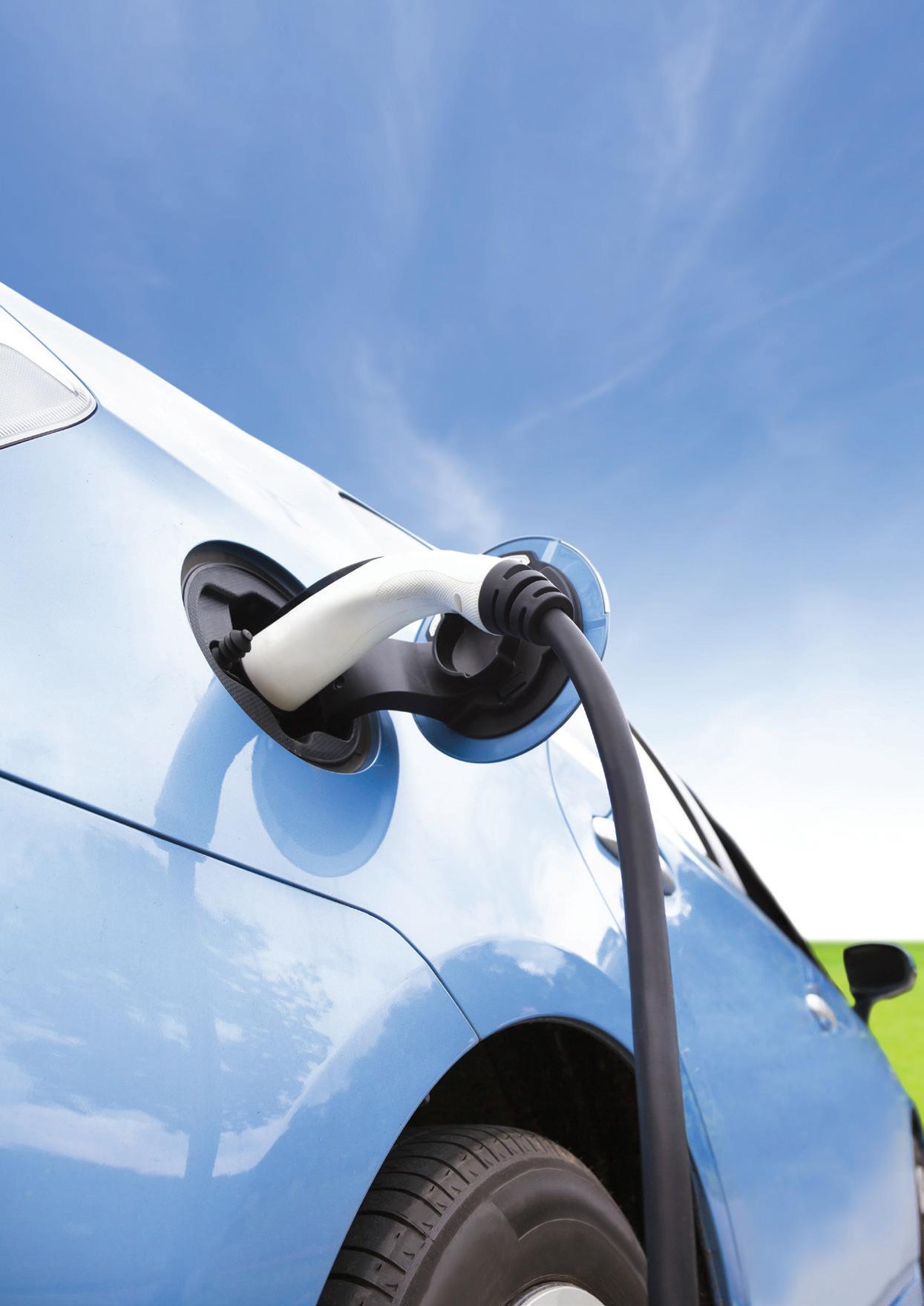
Arming the grid against the evolving threat landscape
Virtual power plants: critical to the future energy network
The charging networks accelerating the EV uptake
ISSUE 8 · November 2019 · www.energymagazine.com.au
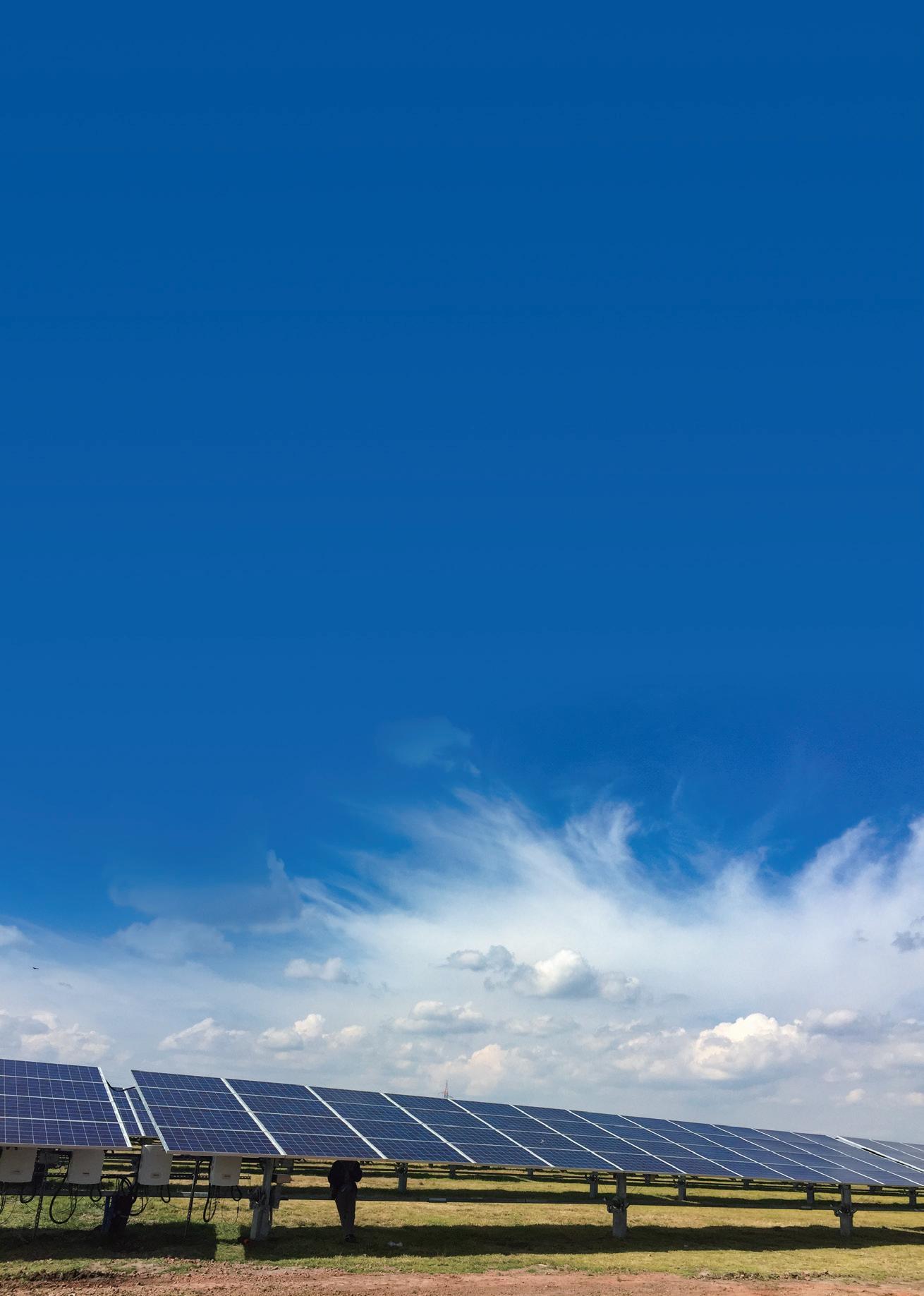
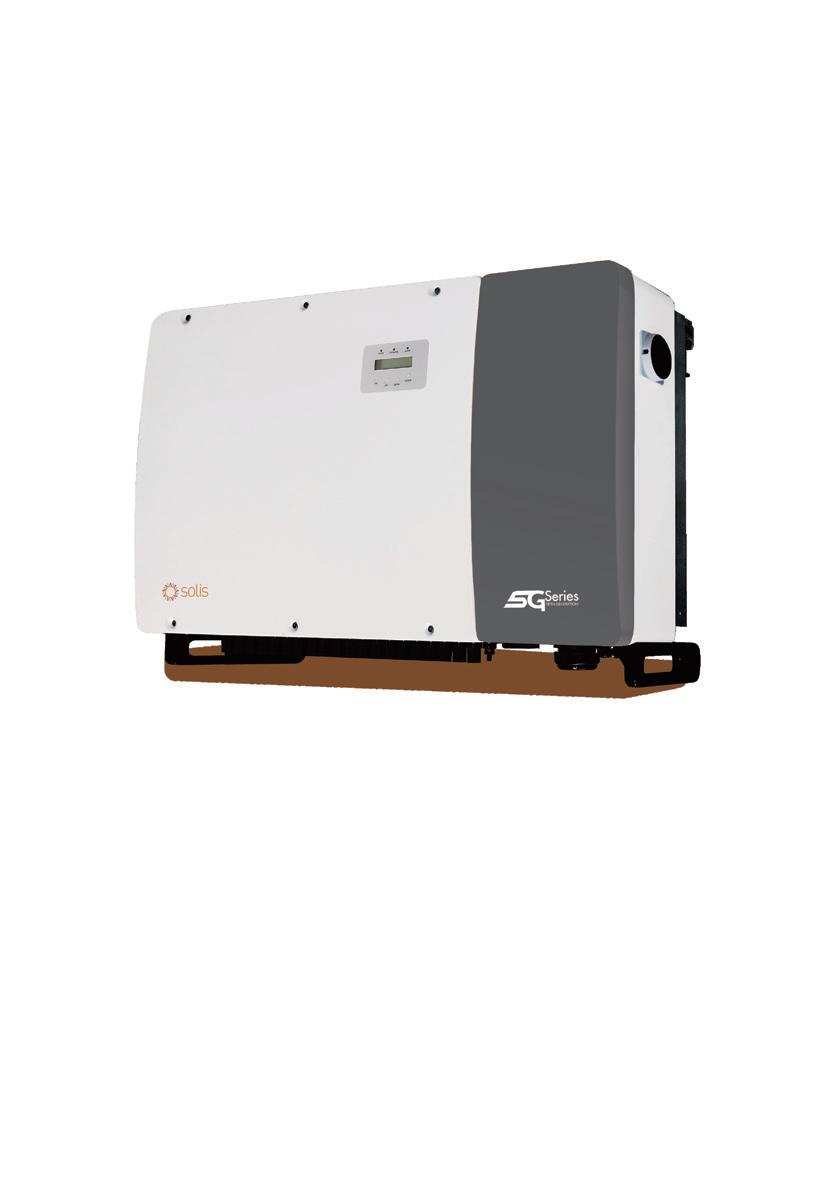
Made by Ginlong Technologies e: Sales@ginlongaust.com.au / w: ginlong.com Local Service Line Booth No. (0) 3 8555 9516 N139 Top 3 Solis Ranked Third Among Asian Brands by BloombergNEF Bankability Globally, the only listed company which main business is string inverter Stock Code: 300763.SZ Max input current 13A perfect match for high efficiency Bi-facial module Support 1. 5 DC/AC 100% components from the world's leading brands Intelligent IV curve scan String monitoring Max efficiency 99. 1% THDi<3% IV 99.1 % 3 % 100 % 150 % 13 A Solis-125K-EHV-5G



ABN: 36 426 734 954
204/23–25 Gipps St
Collingwood VIC 3066
P: (03) 9988 4950
F: (03) 8456 6720
monkeymedia.com.au
info@monkeymedia.com.au
energymagazine.com.au
info@energymagazine.com.au
As the year draws to a close, it’s only natural that we often move into “reflective mode”, looking back on the year that was, and it feels like that’s what we’ve done with this latest issue of Energy. In the pages ahead, you’ll see some of the great achievements of 2019 captured and celebrated, and you’ll also read about some of the lofty ambitions that the industry has for the new yearand indeed decade - that is just around the corner.
The future for the industry is in energy that is clean, and our focus on sharing some of the latest projects, technologies and developments that will lead us towards this future remains resolute. In the pages of this issue you’ll find articles about new models of energy delivery - in particular, the rapid development of virtual power plants; new methods of energy production, such as energy-from-waste; and the work that is being done to electrify our vehicles (and the importance of ensuring we do this with renewable energy).
Without wanting to harp on about it, we also know that the future for the energy industry will need a clear, bipartisan policy plan if we’re to reach our full potential. Matt Rennie is someone in the industry who has
always presented opinions and solutions that I’ve admired; so I’m delighted that in this issue Matt has shared his thoughts on the blueprint we need to ensure a successful energy transition.
Also important for the future of the energy industry is the building of resilience measures into the way we operate. This is a topic I’m hearing more and more about - as the world we live in becomes less certain, it’s imperative that the owners and providers of critical infrastructure are prepared to face the many and varied threats we face. You’ll find a number of articles on this topic in our Disaster Management feature, which begins on page 49.
Across all of these areas, the common undercurrent to me is the technology we will need in order to be able to deliver on our lofty ambitions. While we haven’t yet answered all the questions on how we will deliver the clean energy system of the future, each year we continue to see new technological innovations that are bringing us closer and closer to the ideal.
As 2019 draws to a close, I know I for one am pretty excited about what the new year, and new decade, have in store for the energy industry.
1
Harvey Editor ISSUE 8—NOVEMBER 2019 WELCOME
WELCOME Editor Laura Harvey Assistant Editors Eliza Booth India Murphy Design Manager Alejandro Molano Designers
Buckmaster Danielle Harris Business Development Manager Rima Munafo Publisher Chris Bland Operations Manager Kirsty Hutton Cover image highlights our feature on electric vehicles www.energymagazine.com.au The charging networks accelerating the EV uptake Arming the grid against the evolving threat landscape Sparking gender equality in the energy industry Virtual power plants: critical to the future energy network
Laura
EDITOR’S
Jacqueline
Monkey Media Enterprises
Published by We’re keen to hear your thoughts and feedback on this issue of Energy. Get in touch at info@energymagazine.com.au or feel free to give us a call on (03) 9988 4950. 5,285 This publication has been independently audited under the AMAA’s CAB Total Distribution Audit. Audit Period: 1 October 2018 - 31 March 2019 November 2019 ISSUE 8
ISSN: 2209-0541









2 GRID INTEGRATION AND STABILISATION 18 SA’s virtual power plant: a new phase for Australian energy 22 Industry moves forward with battery storage standard 24 Pulling down poles on the Horizon OPINION 12 Sparking equality in the energy industry 16 Missing blueprint key to ensuring Australia’s successful energy transition 22 12 RENEWABLE TECHNOLOGY 26 How to ride the clean energy wave 28 Here comes the sun: effective delivery of large-scale solar 30 From mega-waste to megawatts 32 Advanced aerial inspection for wind farms EMBEDDED NETWORKS 34 Providing greater protection to embedded network customers 26 NEWS 6 South Australia approves hydrogen production facility 7 Momentum Energy fined $900k for concession payment breaches 8 Funding flows for Australia’s first Solar Gas Hybrid project 10 Global energy players in $2.2 billion mega-deal for Australian assets 10 AGL enters agreement offering to acquire telecommunications businesses 11 Companies pledge to deliver more affordable energy EACH ISSUE 1 EDITOR'S WELCOME 4 CONTRIBUTORS 76 FEATURES SCHEDULE 76 ADVERTISERS’ INDEX CONTENTS November 2019 ISSUE 8 www.energymagazine.com.au
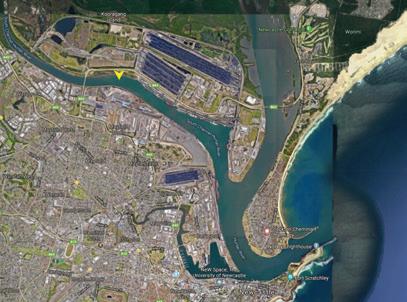











CONTENTS 3 DISRUPTION
The energy impact of big data
Virtual power plants: critical to Australia’s future energy network 64 SWITCHGEAR
Maintaining the spark: why upgrading electricity infrastructure matters EVENTS
Get ready for EN2020 in Brisbane IOT & CLOUD COMMUNICATION
The connected worker DISASTER MANAGEMENT
Powering on for a safe summer
The building blocks for resilient cities
Detecting cyber intrusions in a digital substation?
Weathering the storm - arming Australia’s grid against the evolving threat landscape 54 ELECTRIC VEHICLES
Ultra-rapid
up for EVs
Accelerating the
EVs: implementing one of Australia’s biggest charging networks 60
GAS OUTLOOK
energy demands
just hot air:
in urban environments
MANAGEMENT
How behavioural science can help us manage energy demand on our hottest days 38 www.energymagazine.com.au November 2019 ISSUE 8 70 72
64
66
72
74
70
49
50
52
54
56
network gearing Australia
60
uptake of
DOMESTIC
38 The Newcastle GasDock Project: the solution for NSW’s growing
42 Not
waste-toenergy
DEMAND
46
Matt Rennie

Christopher Dean
Chief Executive Officer, Choice Energy
With over 15 years of management experience across three continents, Chris has a passion for developing teams and making things happen. Chris came up with Choice’s business model and co-founded the company after identifying a gap in the market to help businesses use less and also pay less for the power they do use. As a leading Energy Management Consultancy, Choice Energy’s mission is to empower its clients by providing expert advice, innovative energy solutions and unrivalled support that delivers enhanced economic and environmental outcomes for Australian businesses.
Oceania Leader, Energy Transition, EY
An accomplished leader in electricity, water and gas markets, Matt specialises in providing strategic advice with a particular focus on new and enabling technologies to facilitate clients’ energy transition. With over 20 years global experience in the Power and Utilities sector, Matt helps solve his client’s biggest and most complex challenges at this critical time for transition. He is currently focused on advising on energy and hydrogen strategy, market entry, value pools, feasibility and funding for new energy areas. As a thought leader on the future of energy and transition for a cleaner energy future, Matt has advised governments, regulatory agencies and global agencies, including the OECD on competition policy and markets, and has been a member of new energy technology roundtables and advisory panels globally focusing on opportunities and disruptive consequences of the global energy transition.
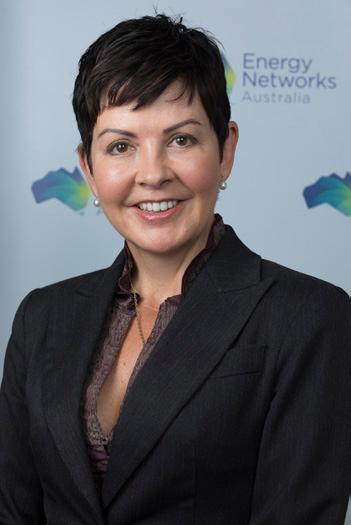
Tamatha Smith

General Manager Corporate Affairs, Energy Networks Australia
Tamatha Smith is an external affairs and government relations professional with a career that has spanned government and public relations, corporate affairs management, journalism and executive positions at senior levels of the Federal and Western Australian governments. She has worked in leadership roles managing internal and external communications for private and publicly listed companies across a range of industry sectors including resources and infrastructure, government and not-for-profit organisations. Tamatha’s expertise includes issues and crisis management, strategic planning, policy development and brand and reputation management. Tamatha commenced her role with Energy Networks Australia in March 2018.
Chief Executive Officer, Evie Networks
Chris is an experienced leader in the deployment and operation of network infrastructure. He has deployed telecommunication networks across Australia, UK, Europe and the US. He launched Optus’ 4G service in Australia and led Optus’ mobile network deployment for five years. Immediately prior to joining Evie Networks, Chris led network deployment for Sprint Corporation in the US.

4 CONTRIBUTORS
November 2019 ISSUE 8 www.energymagazine.com.au
Chris Mills

Utilities Strategy Lead, Accenture Australia and New Zealand
Simon Vardy is the Managing Director of Accenture’s Utilities Strategy practice across Australia and New Zealand. In addition, he serves as the Accenture Sustainability Lead. During his career, Simon has gained extensive experience in strategic business transformation, growth strategy, performance improvement, strategic cost reduction, investment analysis and regulatory issues analysis. Simon works with some of Australia's leading energy and utility companies (electricity, gas and water), government departments and industry associations and has a specialisation in energy and water market reform, and strategic business model development. Prior to working in consulting, Simon held line management positions in mining, manufacturing and IT services. Simon holds an MBA from the Melbourne Business School, a Bachelor of Information Systems from Monash University and has published a number of public reports, research papers and thought leadership.
Chief Executive Officer, Chargefox
Marty is the founder and CEO at Chargefox, Australia's largest open ultra-rapid network of EV charging stations. By the end of the year Chargefox will have connected Adelaide to Brisbane for EV drivers, with additional stations in TAS and WA. Prior to Chargefox, Marty was founder and CEO at Cogent – a software business in Melbourne. Since 2007, Cogent has been an ongoing successful experiment in running an open, values driven business. It uses skills in strategy, design and development to help customers build useful products. Marty's extensive experience as a developer combined with his business background makes him uniquely positioned to bring innovative charging technology to the market.


James is a global corporate strategy and communications professional with a deep knowledge of the LNG industry and a track record of growing companies. With a focus on strategic communications, marketing and regulatory affairs, James is adept across business disciplines, and provides key support in executing the strategic vision of EPIK. James has significant stakeholder management experience working with government officials, the public, and the media, among others. Most recently, James led communications and external affairs for NextDecade, supporting the development of the Rio Grande LNG project and assisting in NextDecade’s successful listing on the NASDAQ.
5 CONTRIBUTORS
www.energymagazine.com.au November 2019 ISSUE 8
Executive Director of Corporate Strategy, EPIK
James Markham Hill
Simon Vardy
Marty Andrews
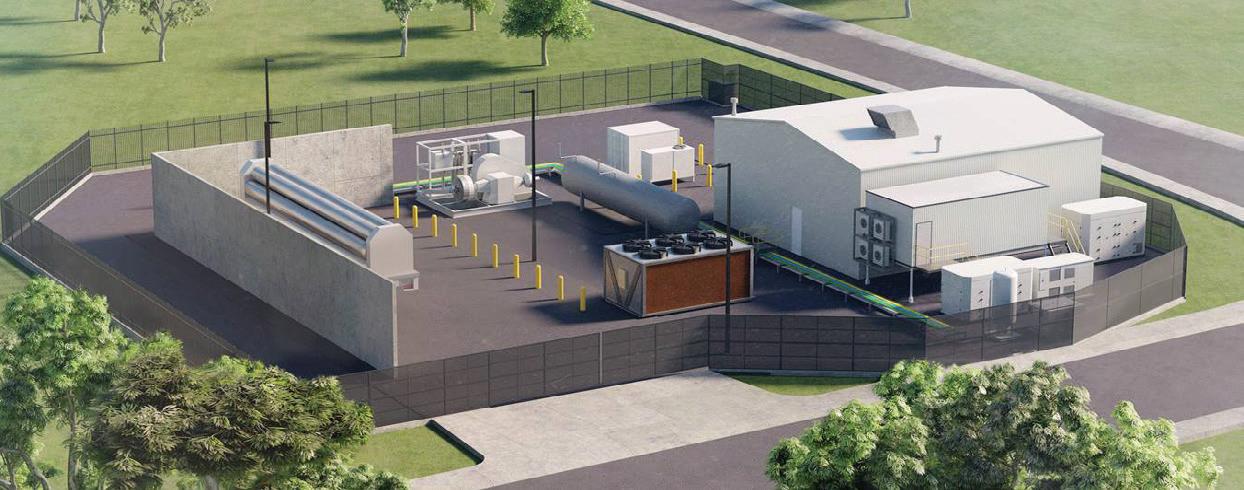
SOUTH AUSTRALIA APPROVES HYDROGEN PRODUCTION FACILITY
Australian Gas Networks (AGN) will construct and operate a $11.4 million hydrogen production facility at Tonsley Innovation District in the south of Adelaide with the South Australian Government approving the project.
Adelaide-based AGN – part of the Australian Gas Infrastructure Group (AGIG) – said development approval paved the way for plant construction to commence at Hydrogen Park SA (HyP SA), with first production of hydrogen targeted for mid-2020.
AGN’s Chief Executive Officer, Ben Wilson, said, “This is a significant milestone in South Australia’s continuing transition to a cleaner energy future. It propels the state’s status as a leader in renewable technology and a first mover in hydrogen.
“At HyP SA we will be building a 1.25MW electrolyser as the first Australian demonstration project of its scale and size, with small quantities of renewable hydrogen produced and blended into the local gas distribution network next year.
“This will enable residents in parts of the Adelaide suburb of Mitchell Park, by mid-next year, to become South Australia’s first natural gas customers to receive a blended five per cent renewable gas – a combination of natural gas and renewable hydrogen.”
AGN received a $4.9 million grant from the South Australian Government’s Renewable Technology Fund to build and operate the project. Using a 1.25MW proton exchange membrane (PEM) electrolyser, renewable electricity will be used to split water into oxygen and hydrogen gas.
The renewable hydrogen will then be blended with natural gas and supplied to 710 customers in southern areas of Mitchell Park via the existing natural gas network.
South Australia’s Minister for Energy and Mining, Dan van Holst Pellekaan, said the facility is a key component of the government’s plans for renewable hydrogen.
“The release of our Hydrogen Action Plan this week shows we’re committed to growing hydrogen exports from South Australia, creating jobs and pushing renewable hydrogen into our energy mix.
“This is a significant step forward towards an affordable and reliable renewable energy future for South Australia.”
Mr Wilson said AGN’s HyP SA project represents the first step towards decarbonising South Australia’s gas networks.
“The decarbonisation challenge is huge and many solutions are needed for Australia to meet its emission reduction targets, and that includes gas stepping up to play its part.
“Developing the hydrogen economy will also play a key role and the momentum around hydrogen is building with burgeoning research and development underway.
“Commercial hydrogen production is achievable and can decarbonise Australia’s energy mix while at the same time accessing export markets.
“Australia – including South Australia – is ideally placed for hydrogen export to North Asia.
“When burnt, hydrogen does not release any carbon emissions, only water and heat so it is essentially just another gas we can use in place of, or blended with natural gas to provide energy and heat.”
Customers receiving the blended five per cent renewable gas will not notice any difference in their gas supply.
There is no additional cost to customers receiving the blended five per cent renewable gas and the change will not impact any arrangements these customers have with their existing natural gas retailer.
Renewable hydrogen will comprise no more than five per cent of the total blended renewable gas volume to be supplied to parts of Mitchell Park. The characteristics of the blended five per cent renewable gas are consistent with the Australian Standard for natural gas supply.
Similar projects are under development in other states by other gas network operators. Whilst natural gas is already a low-carbon option for homes and businesses, the blending of renewable hydrogen provides an opportunity to reduce carbon emissions even further.
The new blended five per cent renewable gas is not the first time hydrogen has been used in Adelaide homes.
Before natural gas pipelines were laid in the 1960s, Adelaide properties ran on ‘town gas’ which was manufactured from coal and typically comprised 50-60 per cent hydrogen.
Hydrogen is already in use in parts of Europe as a blended residential gas for cooking, hot water and heating, varying between 10 per cent and 20 per cent of total gas content.
This project is a first step in AGN’s vision to deliver 100 per cent renewable gas.
NEWS 6 November 2019 ISSUE 8 www.energymagazine.com.au
MOMENTUM ENERGY FOR CONCESSION PAYMENT BREACHES
Victoria’s energy regulator, the Essential Services Commission (ESC), has issued $900,000 in penalty notices to Momentum Energy for allegedly overcharging hundreds of vulnerable Victorians by failing to apply relevant concessions to customer’s bills.
Momentum Energy has apologised for the mistakes which led to some customers not receiving their concession payments.
The ESC issued 60 penalty notices of $15,000 each in relation to Momentum Energy failing to notify customers within ten business days of becoming aware that it had overcharged them by $50 or more.
slow in notifying the affected customers. We will learn from this incident to ensure we can avoid errors of this kind in the future.”
Ms Childs said the problem was a historical one and changes to processes and systems had already been put in place.

“We got it wrong and we let down some of our most vulnerable customers,” Momentum Energy Managing Director, Amy Childs, said.
“We take full responsibility for our mistakes, we apologise to the customers affected and we have rectified the underlying issues.
“Although we notified the ESC of the problem, we were too
Following a major upgrade of Momentum Energy’s Customer Relationship Management system, concessions were not correctly applied to new customers or to customers with changed concession details. The error was discovered in March 2018.
Momentum Energy notified the ESC of the issue, but customers were not notified within the required ten business days.
Momentum Energy has already applied a credit to all 2585 affected customers. This number includes 340 former customers who are no longer with Momentum, who are yet to receive a refund and may not be aware the credit is available to them. The average outstanding amount for these 340 former customers is $69.30.
The company has entered into an enforceable undertaking with the ESC to take further steps to contact these former customers.


7 NEWS www.energymagazine.com.au November 2019 ISSUE 8 PURE. RELIABLE. POWER. For more information contact Power Equipment Pty Ltd web: www.powerequipment.com.au email: info@powerequipment.com.au phone: 1800 069 469 A world leader in agricultural equipment for over 100 years, Yanmar’s continued desire for innovation brings you reliable, powerful and clean running generators available today. Power when you need it, even in the most demanding environments.
FUNDING FLOWS FOR AUSTRALIA’S FIRST SOLAR GAS HYBRID PROJECT
Australia’s first major iron ore mining operation which will run solely on renewable energy during the day is set to be constructed in Western Australia’s Pilbara region.
On behalf of the Australian Government, the Australian Renewable Energy Agency (ARENA) announced $24.2 million in funding to Alinta Energy Pilbara Finance (Alinta) to develop its Solar Gas Hybrid project to power Fortescue Metals Group’s (Fortescue) Chichester mining hub.
As part of Alinta’s project, a 60MW solar PV facility will be constructed and approximately 60km of new transmission lines will link Fortescue’s Christmas Creek and Cloudbreak mines with the new solar farm.
The project will also see the transmission lines connect the Chichester Hub’s mines and Roy Hill to Alinta’s existing 145MW gas-fired Newman Power Station and its 35MW/11MWh battery storage system.
Fortescue is to be the offtaker of the project, which will help to reduce their use of diesel by around 100 million litres annually. This will allow up to 100 per cent of daytime energy requirements for
the Chichester iron ore mining operations to be powered by renewable energy, with the remaining power requirements to be balanced with gas generation.
The project will highlight the benefits of integrating renewable energy into mining processes to displace current fossil fuel generation, and how renewable energy can help the mining sector reduce its emissions.
The Northern Australia Infrastructure Facility (NAIF) will also provide a loan of up to $90 million.
ARENA CEO, Darren Miller, said the project could unlock further investment in renewable energy in the mining sector and other remote and energy intensive operations.
“Alinta’s project will demonstrate how renewable energy solutions can deliver critical energy requirements for major mining operations and help reduce emissions. This will also show how interconnection of loads and different generation and storage – including solar, battery storage and gas – can provide secure and reliable electricity.
ARENA has funded a range of renewable energy projects in the mining and resources sector, including AER’s Port Gregory wind farm that will power a garnet mine, solar hybrid projects at
Gold Fields and Agnew gold mines, and Santos’ beam pump trial in the Cooper Basin.
“Through projects such as this, ARENA is helping industry to reduce emissions. The mining sector in Australia, which is vital to our economy, accounts for approximately ten per cent of our energy use, so it is hoped these projects will encourage more mining operations to look to renewable energy and low emission solutions.”
Alinta Energy Managing Director and CEO, Jeff Dimery, said “Working together, we are on the cusp of demonstrating that renewables can drive Australia’s economic powerhouses forward – even for remote and complex industrial applications.”
Fortescue CEO Elizabeth Gaines said the project is a first on this scale for the Pilbara and will reduce carbon emissions from stationary generation by around 40 per cent at Fortescue’s Christmas Creek and Cloudbreak mining operations, while driving long-term sustainable cost reductions to maintain Fortescue’s global cost leadership position.
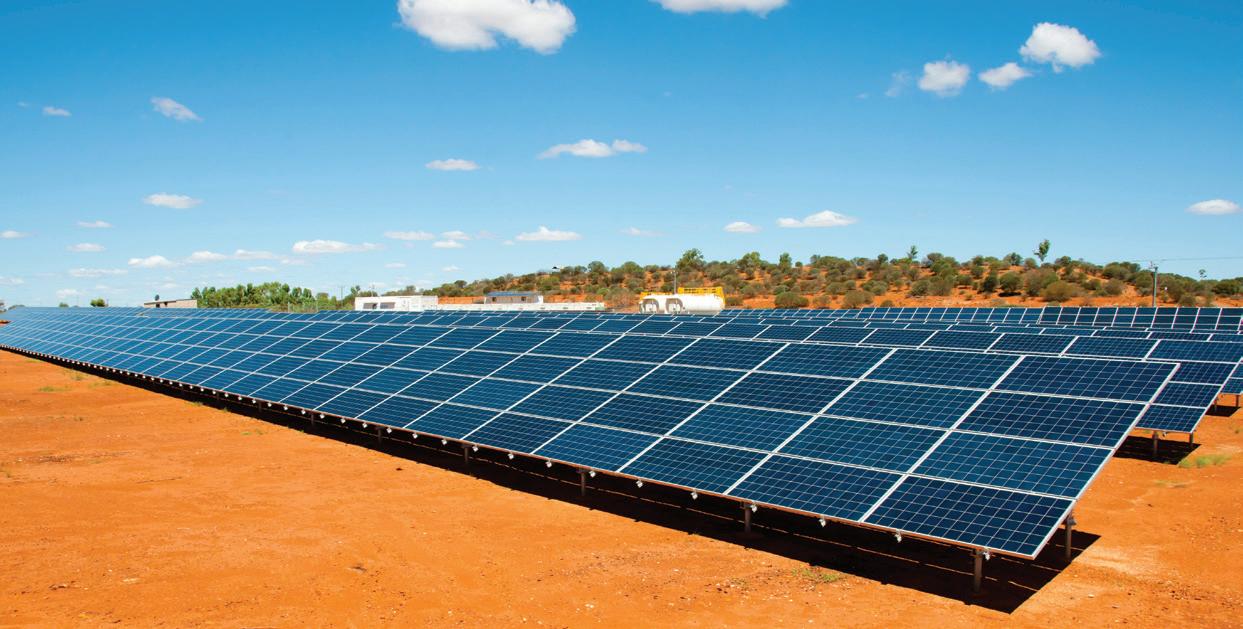
Construction is expected to commence before the end of 2019 and be completed by mid-2021.
8 November 2019 ISSUE 8 www.energymagazine.com.au NEWS
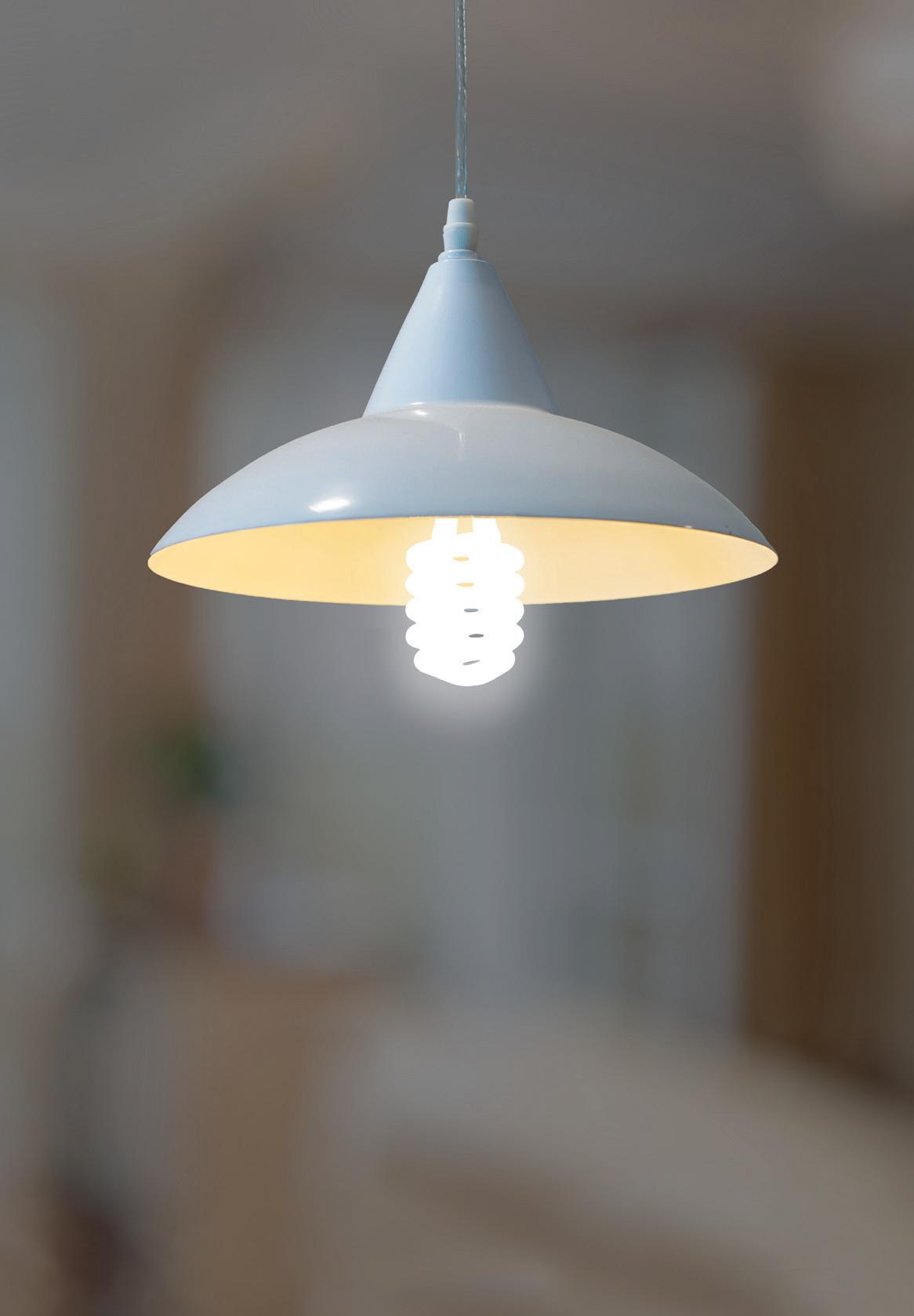
Reth in k energy
With solutions designed for your operational priorities. Providing operations and maintenance services for critical energy infrastructure is Veolia’s core focus. In doing so, we contribute to long-term energy security and climate resilience within the communities we serve. Are you ready to Rethink Sustainability?
veolia.com/anz

GLOBAL ENERGY PLAYERS IN $2.2 BILLION MEGA-DEAL FOR AUSTRALIAN ASSETS
Santos has acquired ConocoPhillips’ Northern Australia business, including operating interests in Darwin LNG, Bayu-Undan, Barossa and Poseidon, for $US1.39 billion ($A2.2 billion) plus a $A75 million contingent payment subject to final investment decision (FID) on Barossa.
According to a statement released by Santos, the megadeal will deliver the company operatorship and control of strategic LNG infrastructure with growth potential. The deal also advances and supports Santos’ goal of taking Barossa FID by early 2020.
Santos Managing Director and Chief Executive Officer, Kevin Gallagher, said Santos has enjoyed a long-established relationship with ConocoPhillips which has operated its Northern Australia natural gas assets for many years.
“Santos was a founding partner with ConocoPhillips in Darwin LNG, which has been operating since 2006. The acquisition of these assets fully aligns with Santos’ growth strategy to build on existing infrastructure positions while advancing our aim to be a leading regional LNG supplier,” Mr Gallagher said.
“This acquisition delivers operatorship and control of strategic LNG infrastructure at Darwin, with approvals in place supporting expansion to 10mtpa, and the low-cost, long-life Barossa gas project.
“These assets are well known to Santos. It also continues to strengthen our offshore operating and development expertise and capabilities to drive growth in offshore northern and Western Australia.
“Santos is also committed to being Australia’s leading domestic gas supplier and we will be pursuing domestic gas opportunities in the Northern Territory from our broader northern Australia
gas portfolio where we have significant resource potential both onshore and offshore.
“Santos intends to manage gearing within our stated operating range and is targeting to sell-down equity in Darwin LNG and Barossa to 40-50 per cent in order to create alignment between joint venture participants as well as by optimising equity levels in our Western Australia assets.
“We are also in discussions with existing Darwin LNG joint-venture partners to sell equity in Barossa and further equity in Darwin LNG and also with LNG buyers for offtake volumes. Santos will target the contracting of approximately 60-80 per cent of LNG volumes for more than ten years prior to taking FID on Barossa, which is expected by early 2020. Discussions to date have demonstrated strong interest in Barossa LNG, given it is a brownfield upstream development located close to North Asian demand.
“The acquisition is value accretive for Santos shareholders in year one following completion across a range of metrics and importantly further reduces our free cash flow breakeven oil price by approximately $US4 per barrel in 2020.
“As we have demonstrated following the acquisition and integration of Quadrant Energy into our offshore business, Santos’ low-cost operating model is creating opportunities for disciplined growth across Australia.
“We look forward to welcoming ConocoPhillips’ Australia-West employees to Santos and combining the two businesses to create one high performing team with a wide range of exciting career opportunities across Santos,” Mr Gallagher said.
AGL ENTERS AGREEMENT OFFERING TO ACQUIRE TELECOMMUNICATIONS BUSINESSES
AGL Energy has announced it has entered into a conditional agreement to acquire one of Australia’s largest regional telecommunications businesses.
The offer, if accepted, would see the acquisition of all issued capital of Southern Phone Company Limited (SPC), from its current 35 local council shareholders for $27.5 million.
AGL intends to maintain SPC’s business operations, brand and unique product offerings focused on regional customers.
The agreement is subject to a number of conditions, including acceptance by SPC shareholders of AGL’s offer.
AGL CEO and Managing Director, Brett Redman, said the acquisition presents a range of exciting opportunities for residential and small business customers.

“AGL’s first step into the broadband and data sector, which is part of our growth strategy, builds on our strong regional presence as an energy retailer and SPC’s telecommunication services and capabilities,” Mr Redman said.
“The acquisition allows us to create space for new products and services that meet the needs of increasingly connected customers as energy and data converge.
“We are focused on responding to our customers’ evolving needs as we transform from a major energy retailer to a major, broader essential service provider.
“We believe the acquisition, as part of our broader strategy, will create significant value for our connected customers and also for our shareholders.”
10 November 2019 ISSUE 8 www.energymagazine.com.au NEWS
COMPANIES PLEDGE TO DELIVER MORE AFFORDABLE ENERGY
The companies that formed The Energy Charter in January 2019 have provided disclosure reports to an Independent Accountability Panel which will now commence a period of public consultation based on the reports.
The Energy Charter is a CEO-led initiative of 18 Australian energy companies. This is the first time that all parts of the energy supply chain have come together and committed to a disclosure framework to help deliver a more affordable, reliable and sustainable energy system for all Australians. Importantly, each company has reviewed how they can support cultural change within their own business and as an industry.
Chair of the Energy Charter CEO Council, John Cleland, said the energy industry has recognised that it needs to do better and the independent panel process will provide further guidance, discussion and motivation for the signatories.
“This is a milestone for the Australian energy industry and those companies

that have opted to be involved. For the first time, companies are coming together to see how they can better support customers,” Mr Cleland said.
“Together with Energy Consumers Australia and other end-user representatives, we have recognised that there’s a long way to go in this space, and that things won’t change overnight, but this is an important shift towards a greater understanding of customer needs.”
The Independent Accountability Panel will now review the disclosures. The CEOs of the Energy Charter signatories will meet with the panel over coming weeks to discuss their respective disclosures.
Mr Cleland added that this was also an opportunity for energy customers to see for themselves the positive changes already put in place by the signatories.
“The Energy Charter was established in recognition that the industry was undergoing a period of tremendous change and needed to transform its approach to customers,” Mr Cleland said.
“While there are many opinions about the Australian energy industry, the fact

that so many Boards, CEOs, Managing Directors and senior executives have been engaged in the Energy Charter is a reflection on how seriously we are taking this. We are committed to being more open, accountable and doing more to listen to our customers.”
The Independent Accountability Panel’s period of public consultation will include CEO briefings and stakeholder forums to be held in Sydney, Brisbane and Melbourne in October.
The Independent Accountability Panel’s report will be published at the end of November 2019.
The signatories that make up the Energy Charter are: ACTEW AGL, AGL, APA Group, Aurora Energy, Ausgrid, Australian Gas Infrastructure Group, CleanCO, CS Energy, Endeavour Energy, Energy Australia, Essential Energy, Jemena, Ergon Energy Retail, Ergon Energy Network, Energex, Yurika, Meridian Energy, Ovida, Origin Energy, Powerlink, Powershop, Stanwell and Transgrid.

Configure your Kubota diesel generator to kick in the moment your solar shuts down – reliable backup power Call now for your nearest dealer. 1300 582 582 | kubota.com.au Prepare for the loss of solar power With Kubota diesel SE & GL generators + Compact design and superior performance + Circuit breakers and residual current device are factory fitted + Single side servicing + Auto start controller 11 www.energymagazine.com.au November 2019 ISSUE 8 NEWS
KUBOTA
SPARKING EQUALITY IN THE ENERGY INDUSTRY
A recent study by EY has revealed a significant link between female representation in the workplace and improved business performance – so why is the Australian energy industry falling behind when it comes to women in energy roles, and how would a gender-diverse energy industry differ from the one we know today?
Despite the fact that women are filling roles that were once male-dominated across many Australian industries, the energy sector is falling behind when it comes to female employment.
The 2018 research conducted by EY revealed that only five per cent of board executives and 16 per cent of board members of the top 200 utilities globally are women.
Energy spoke with CEO of Choice Energy, Christopher Dean, about the company’s commitment to overcoming underrepresentation of women in the energy sector and its approach to leading the way in this significant cultural shift.
Choosing cultural change
With up to 90 per cent of applications for junior roles at Choice Energy coming from men, Mr Dean said it can be difficult to initiate change when it comes to diversity in the workplace.
In order to overcome this, the company investigated barriers to female participation. What it found is that for energy companies to have the opportunity to employ women, measures must first be taken to engage them.
“The energy industry needs to engage and retain more women – and promote them – to fill its growing needs for skills. Their leadership and contributions will be crucial to ensuring that the energy systems of the future address the needs of modern societies and leave no one behind,” Mr Dean said.
While he admits change can be daunting at first, Mr Dean said that Choice Energy has seen a significant increase in the number of women working for the company as a result of fostering a company culture that is willing to welcome and invest.
30 per cent women now. That number is still very low, but three of our top five salaries are women. That’s something we’re quite proud of,” Mr Dean said.
One way Choice Energy has endeavoured to increase female interest in the energy sector is through partnering with education providers. The company has had university interns join the team before and is keen to expand their efforts in this area.
With the ratio of women to men increasing, Choice Energy has seen a significant change in the business. With the ratio continuing to improve each year, the company expects to see ongoing benefits both for itself and for the women it employs.
The impact of equality
According to the Workplace Gender Equality Agency (WMEA), statistics show that when at least 30 per cent of a company's leadership positions are filled by women, the company tends to report a 15 per cent growth in profits.

“For the first women that come into a male-dominated environment, I imagine it must be a bit daunting. But we’re roughly

“Each time we hire a woman and promote them into leadership, it gets easier,” Mr Dean said.
“Hiring our Operations Manager was one of the best things that we’ve done. At the time we felt it was a bit of a risk; the safer option was to hire the bloke from the energy sector. Within two days of her starting, we knew we’d made the right choice,” Mr Dean said.
Successfully introducing more women into the energy industry, and seeing these statistical benefits, comes down to being welcoming, keeping an open mind, and starting important conversations, according to Mr Dean.
“If you do post a job and you get a lot of male CVs, just sort of accept that it isn’t necessarily the way to go. If you’re choosing between two people that look the same on paper, just open your mind up to EQ and softer skills, because they could be something that you’re lacking.
OPINION
12
Christopher Dean.
“What we’re doing at Choice Energy is talking about it and sharing it. I think that could change the thinking of some of the other businesses that lead in the energy sector.
“If sharing this message gives us one extra female recruit, then it’s been a win. But the likelihood is the more we talk about it, the more female leaders we will bring on, so it’ll be compounding from there,” he said.
Stigma and stereotypes
With a lack of diversity in leadership, any sector can fall victim to a negative stigma. According to Mr Dean, the energy sector needs to work at improving its reputation, particularly when it comes to its approach to sensitive issues.
“I think having more diverse leaders will help that. Women can see the world differently, and I know it’s definitely made our workforce a better place for both men and women to work in,” he said.
As a direct result of what Mr Dean refers to as a more “nurturing approach”, Choice Energy has implemented in-house counselling services, offering confidential support to its employees who need to talk to a counsellor, free of cost.
“Guys don’t really talk about their feelings too much. We’re trying to break down that stereotype as well. So we’ve got a counselling service and we know that it’s used across our workforce now. That’s something that surprised me.


OPINION
Some of Choice Energy’s senior leadership team. From left to right: Rebecca Xuereb, Daniela Todorovski and Bree Mansell.
13

“Mental health is also something in the industry that doesn’t get talked about enough. Once we opened that out to our team, we had men and women take it up straight away. So that’s one thing in the industry that other energy companies that are male dominant are probably missing,” Mr Dean said.
A holistic approach
While drumming up female interest in employment is a significant step in closing the gender gap and improving the sector, achieving gender balance comes down to the roots of the business and making subtle, inclusive changes.
“We help a lot of manufacturing businesses because they’re heavy users of energy, and they’re typically male dominant –so all of our sales scripts and customer service scripts tended to say ‘he’, or ‘Mr Customer’. I’ve always been pretty big on ‘she’ and ‘Mrs Customer’. Just trying to make it so it’s not so male dominated,” Mr Dean said.
While this may seem like a small step in combating a bigger issue, these changes can have a positive flow on effect to the overall culture of a business.
“In terms of the culture, a woman coming in and having all the scripts and training being ‘he’ related – that probably doesn’t help either. Just being mindful of talking about women makes a difference.”
In a holistic approach to gender balance, Choice is also aiming to support and normalise families’ various approaches to work.
“We recently hired a part-time finance controller who is male. He works two days a week so he can look after his kids the other three days so that his wife could go back to full-time work. It’s actually the man who’s staying home with the kids now in the parttime role, which is just something that probably wouldn’t happen 15 to 20 years ago,” Mr Dean said.
The future of energy
With female interest in energy still low, the future of a gender balanced energy sector is reliant on reputation and recruitment. Sometimes, this means looking outside the industry for the perfect fit.
“When we came down to our Operations Manager hire we had a shortlist of three, with two from the energy industry. The successful applicant, Daniela, wasn’t from the energy industry. We thought she had some better, softer skills that the company needed, rather than hard energy operations type things. If we’d just hired another energy person, it would just be more of the same.
“All the women leaders we’ve got we’ve hired because they’ve been the best candidate for the role, not just because they’re female. I think that’s important as well. But we pay special attention if we’ve got two people that on paper can bring the exact same thing skill wise,” Mr Dean said.
With adaptation being key to long term success within the energy sector, energy companies are consistently looking at ways to change and improve operations. Mr Dean said that while some assets can be automated, replaced, or sent offshore, things like emotional intelligence are becoming increasingly important and simultaneously difficult to find.
“I think diversity, more than ever, is going to play a massive role going into the next ten or 20 years of our industry.
“I would argue that most businesses will need to evolve, or they’ll end up just disappearing. When we look at the future of this industry and the future of this gateway, women play a pivotal role.
“I hope we can convince more women to see energy as a great option for a rewarding career and an opportunity to play a role in leading the industry toward a lower-emissions future.”
November 2019 ISSUE 8 www.energymagazine.com.au 14 OPINION
Some of the Choice Energy team, including at front, Head of Strategic Partnerships Rebecca Xuereb.
PURE HYDROGEN, ZERO EMISSIONS
At ANT Energy Solutions, we use only the best technologies in our custom-made renewable energy systems for the creation and use of Green Hydrogen as a 24/7 energy source. Using both state-of-the-art PEM or alkaline electrolysers from our partner Hydrogenics, a simple, robust interface splits water into hydrogen and oxygen. The created hydrogen can then be used immediately or stored for future energy requirements.
ANT Energy Solutions is serious about next generation electrolysers and are passionate about creating effective products and solutions for Australia’s transition through the supply of reliable, renewable and secure energy supplies. With a research and development program supported by the government Cooperative Research Centres Projects (CRC-P) grant, scaled down electrolysers are being developed which will allow for greater flexibility and affordability for energy consumers than ever before. This is ANT Energy Solutions commitment to providing real energy security for Australia and our trading partners.

www.antsolutions.com.au
and
Electrolysers
fuel cells
APPLICATIONS FEATURES CUSTOM USE • Industrial • High Efficiency • Energy Security • Mobility/Transportation • Low Maintenance • Baseload Power • Off-Grid Power • Unlimited start/stop cycling • Replacing Diesel Generators • Hydrogen Export • High run-time • Continuous power requirements
Energy
Small footprint
Small, medium and large-scale
Grid Stabilisation
Fast response times for applications
Power-to-gas frequency control ANT Energy Solutions info@antsolutions.com.au 1300 596 368 JOIN THE HYDROGEN REVOLUTION
•
•
•
•
•
•

After more than a decade of energy policy inertia, Australia still does not have a complete blueprint to guide the way forward as our energy system evolves. Here, Matt Rennie states the case for such a blueprint, and outlines some of the critical elements it must contain.

MISSING BLUEPRINT
KEY TO ENSURING AUSTRALIA’S SUCCESSFUL ENERGY TRANSITION
by Matt Rennie, EY Oceania Leader, Energy Transition
November 2019 ISSUE 8 www.energymagazine.com.au
16 OPINION

Australia has always been an energy superpower. Our land has been blessed with bountiful amounts of natural resources that can be turned into electricity – from sunshine in our tropical north and desert interior, wind on the NSW tablelands and southern coastlines, coal from the Hunter, gas from NSW and Queensland and uranium from the Northern Territory and South Australia. We have not only exported these resources to the rest of the world, but also used them to generate our own electricity for domestic use. It is no wonder the rest of the world and indeed many here in Australia wonder why we continue to have such a vicious debate over energy policy.
Our energy generation and transmission architecture was built in the early 20th Century and served the country very well in a time of expanding population and economic prosperity. However, this architecture must change with the times to meet changing political, economic, technical and social considerations. These changing considerations are not in the distant future, but rather, are here now. It is these considerations that politicians, regulators, industry, households and the community are dealing with as we chart a course forward on energy policy.
While a few, vocal commentators remain fixated on the debate between coal and renewables, the world has moved on from that settled debate. The industry and regulators have recognised that renewables are the future. The questions that are now on the lips of industry and regulators relate to managing the challenges associated with a decentralised energy grid and finding the right balance between edge and cloud technologies in our digital future.
As is often the case with significant changes such as these, there remains a lot of noise coming from Canberra and elsewhere about what must be done to affect a successful energy transition. However, there is a missing piece of the puzzle. Rather than ideological shouting matches, our political leaders should be empowering the guardians of our energy market – namely AEMO, AER and AEMC – to draw a blueprint that best meets policy goals on efficiency, emissions and reliability.
As a start, any blueprint should answer five critical questions about the architecture of our energy generation, distribution and transmission system. These questions are:
1. What is the best way to firm renewable energy to mitigate intermittent supply?
2. Which market structure will encourage more competition in the transmission of energy?
3. How do we better manage the increase in connections to the grid associated with rooftop solar?
4. How do we best manage the emerging transition towards a decentralised electricity grid?
5. How do we incorporate new technologies, such as electric vehicles, into the system?
These questions inevitably raise a number of important distributional challenges that will need to be addressed by the energy regulators. It is important that these questions are answered not by shouts, but rather by detailed policy and regulatory analysis where outcomes for consumers,
industry and Australia are dispassionately assessed free from ideological straitjackets. To that end, three critical actions that government and its agencies could take to ensure a successful energy transition are:
1. Firming renewables to mitigate intermittent supply
2. Imposing more competition in the energy transmission sector
3. New rules and funding mechanisms for energy distribution
Firming renewables to mitigate intermittent supply
One of the clear challenges associated with the renewable energy transition is ensuring there is a constant supply of power. For example, while solar is great during the day, it does not work as well at night. The same challenges apply for wind, as there is not always strong enough wind to keep turbines spinning. As a result, there is a need to firm capacity for renewables so back up power is available when the sun is not shining, or the wind is not blowing. This could take the form of increasing communicable technology to better integrate batteries into the electricity grid. It could also take the form of building capacity or rotating inertia via coal or gas to be paid to be available when there is not enough generation via renewables. Both of these solutions would see a cleaner energy grid, while ensuring reliability.
Imposing more competition in the energy transmission sector
Another important move is a new regulatory and funding compact to allow smaller scale power plants into the energy grid. It is clear the Australian Energy Market Commission (AEMC) and Australian Energy Market Operator (AEMO) must continue reform to better allow smaller scale energy generators to connect to the grid. This change will continue apace as large coal-fired power stations reach the end of their economic life and are retired from the grid.
New rules and funding mechanisms for energy distribution
The final change must be a new funding and regulatory compact between network operators, generators and retailers. The Australian Energy Regulator (AER) must be allowed to develop this new compact to give networks the certainty they need but do not tax the consumer beyond that which is prudent and efficient. This delicate balance is critical to putting the battles over energy policy behind us as political and community support will be sapped by significant or unnecessary increases to household electricity bills.
Despite the headlines, Australia is well placed to settle the long-running debate over energy policy. We have been blessed by an abundance of energy sources that can continue to be a source of wealth and prosperity, as well as cheap and reliable energy. However, to ensure a successful transition to a low carbon economy we must answer some outstanding questions with clear policy goals in mind, not ideological blinkers. To that end, the experts must carry the conversation by continuing to focus on the real questions.
www.energymagazine.com.au November 2019 ISSUE 8
17 OPINION The views expressed in this article are the views of the author, not Ernst & Young. This article provides general information, does not constitute advice and should not be relied on as such. Professional advice should be sought prior to any action being taken in reliance on any of the information. Liability limited by a scheme approved under Professional Standards Legislation. AU00003648
VIRTUAL POWER PLANT: A NEW PHASE FOR AUSTRALIAN ENERGY

November 2019 ISSUE 8 www.energymagazine.com.au 18 GRID INTEGRATION AND STABILISATION
With virtual power plants (VPP) offering outcomes such as lower energy prices, increased grid stability and protection during outages, it’s no wonder that the rollout of what could be the world’s largest VPP has had an overwhelmingly positive response in South Australia. Energy spoke to Scott Oster, Director Projects at the South Australian Department for Energy and Mining, for an update on the ground-breaking project and what it could mean for the energy industry in Australia.
According to Mr Oster, the SA Government has been working on addressing a number of challenges in the state’s energy system in recent years. In 2017, $150 million was allocated, through the Renewable Technology Fund, to fast-track South Australia’s energy transformation by specifically targeting projects that further integrated renewables into the State’s power system and were likely to have the greatest impact on energy pricing. Tesla submitted one of more than 80 applications received through the Fund with a proposal for a VPP.
“The project was designed to provide the benefits of solar and storage to customers who traditionally would be unlikely to be able to afford such technology to manage some of their energy costs, and demonstrate the technical capability and commercial viability of distributed energy resources of providing grid services.” Mr Oster said.
With the support of the SA Government, Tesla are targeting a network of potentially up to 50,000 home solar PV and Powerwall battery systems across South Australia.
The rollout of these systems started with a two phase trial to provide 1,100 Housing SA households with home energy systems. Phase I, the installation of 100 home energy systems, has already been delivered, with an additional 1,000 to become operational by the end of 2019 as part of Phase II.
Trialling together
The decision to start the SA VPP project as a trial has allowed Tesla and the SA Government to try things that were unproven before the project commenced.
“Some of the results we are seeing are really exciting. We’re really proud to be a part of this project,” Mr Oster said.
According to Mr Oster, Tesla has been a fantastic project partner throughout the trial.
“While it’s Tesla’s project they’ve been 100 per cent supportive of working with government to help us meet our objective of delivering cheaper energy to customers who need it most, and we’ve similarly helped them tackle some of the technical and commercial challenges. It’s been really successful, a great partnership.”
The target audience for the trial phase of the project was predominantly low income families, for whom energy affordability is a key concern. Working with Housing SA households has allowed Tesla and the SA Government to tangibly see the benefits that the VPP can provide to customers both financially and in terms of reliability.

“There are quite significant benefits to those customers, with no upfront cost for the installation of the home energy system. What we’ve been able to achieve with this project is that they can receive the lowest retail rate that’s available to residents in SA, and also get the added benefit of the backup of the battery installed on their property in the event of an outage,” Mr Oster said.
Equipping customers
Another way the project is benefiting customers is by increasing the visibility of their energy use. This is done through the Tesla app where customers can monitor their home energy system in real time, and view their energy usage history. Mr Oster said that this is giving customers a more active role in managing their energy consumption.
“I think people are interested in knowing more about how much energy they use and being able to make decisions about their usage. Having that information and being able to make those choices has been really important to some of our customers,” Mr Oster said.
In order for South Australians to take part in the trial and experience these benefits, the SA VPP program invited residents of South Australia to register their interest. Since the initiative was announced, it has received a huge 41,000 online registrations of interest. Mr Oster said that this demonstrates the high degree of interest among South Australians in addressing some of their energy affordability challenges.
www.energymagazine.com.au November 2019 ISSUE 8 19 GRID INTEGRATION AND STABILISATION
“South Australians have in recent years been exposed to some of the highest electricity prices anywhere in the world. It’s a key priority for the government in South Australia to bring around affordability measures for South Australian energy consumers, and particularly low income households, so it’s certainly been a welcome initiative,” Mr Oster said.
World-leading technology
With Phase III potentially rolling out to 49,000 more households, the project could very likely become the world’s largest VPP. At a time where climate policy often comes under scrutiny in Australia, this would be an exciting step in the right direction.
“I think South Australia has always had really strong credentials, particularly in renewable energy. Tesla has now launched the Tesla Energy Plan, a VPP offer to private customers, so we’re already seeing the program expand beyond the trial, even though we haven’t formally closed out phase two yet.
“We’re pretty excited about it. There’s no doubt that South Australia is proud to be the location of not just this VPP, but a number of VPP offerings. AGL and Simply Energy have both undertaken VPP trials in South Australia that are now available more widely. Sonnen offer a VPP through their SonnenFlat product and recently ShineHub launched their VPP into the market. So there are a number of offers currently in South Australia, there’s no doubt that we’re leading nationally, and internationally, in this space,” Mr Oster said.
The impact to the industry
Initial results for the project are looking really promising. In addition we are seeing increased interest in VPPs from retailers as well as technology providers, which we are expecting to lead to further growth and positive outcomes for consumers and the broader energy industry in Australia.
The SA Government has since launched the Home Battery Scheme; a $100 million commitment over four years to install 40,000 batteries across South Australia.
“What we’re seeing is a number of parties coming to market with retail offerings leveraging the Home Battery Scheme. So for customers that have their own home energy system, they can receive even more value by enrolling their battery in a VPP program.
“The SA Government’s very supportive of that, and we look forward to working with these VPPs to help customers achieve even more savings through the installation of storage on their property."
According to Mr Oster, it’s important for traditional energy suppliers to look at the success of initiatives such as the SA VPP to consider how they can create positive change. Many retailers are already starting to actively engage in the space.
“One of the first VPP trials was through AGL. As I mentioned, Simply Energy also have a VPP offer available in SA, along with ShineHub and Sonnen. While a lot of these projects are still in a trial phase, there’s no doubt some of the revenue streams that are now possible by providing network services via VPPs can deliver more value back to customers.
“Once they’re better known and understood, I’d expect that these offerings will continue to grow and provide additional retail competition and downward pressure on energy prices certainly in SA, but also nationally,” Mr Oster said.

November 2019 ISSUE 8 www.energymagazine.com.au 20 GRID INTEGRATION AND STABILISATION


www.energymagazine.com.au November 2019 ISSUE 8 21 GRID INTEGRATION AND STABILISATION
INDUSTRY MOVES BATTERY STORAGE




Positive change has arrived for the battery storage sector with the recent publication of a new electrical installations standard AS/NZS 5139:2019 Electrical installations – Safety of battery systems for use with power conversion equipment.
November 2019 ISSUE 8 www.energymagazine.com.au
22 GRID INTEGRATION AND STABILISATION
FORWARD WITH STANDARD
In recognition of the need for an installation standard for battery storage devices in Australia, Standards Australia worked with industry, government and the broader community, to develop a standard to support the home battery storage industry and safety of the consumer.
“A project of this complexity would not have been possible without the support of industry representatives, government and regulators, consumer representatives and technical experts,” said Standards Australia’s Head of Stakeholder Engagement, Daniel Chidgey. “Given there has never been an Australian standard for this new technology, developing this guidance has been a huge task and is a testament to the dedication of those involved.”
Energetic collaboration and comment
Ensuring the views of the general public and those affected by standards are considered and heard is an important part of the standard development process. The public comment stage in the drafting of the battery storage standard allowed the broader community to review the content and direction of the draft standard prior to its completion.
In 2017, when the draft standard was released for public comment, Standards Australia received around 3000 submissions. Many of the submissions were related to how systems should be installed in a residential context. Standards Australia worked with the committee responsible for the standard, EL-042, Renewable Energy Power Supply Systems and Equipment, to ensure all comments were considered in detail and, where necessary, further drafting was undertaken.
Due to the extent of the change and complexity of the work, the standard was issued for a second-round of public comment.
Charged for change
AS/NZS 5139:2019 went to ballot and reached consensus in July of this year. While consensus was reached by the committee, differing views were put forward and considered along the way.
“Although there were alternate technical positions raised throughout the process, this is a normal step in any consensus project,” said Sandy Atkins, from Standards Australia’s EL-042 Technical Committee.
The standard was published in mid-October and has been developed for use by manufacturers,
system integrators, designers and installers of battery energy storage systems. The publication is an important step for the industry with a consistent set of guidelines now available. It intends to set out the requirements for the safety and installation of battery systems connected to power conversion equipment for the supply of AC and DC power.
“The standard now makes it easier for the installer to know what requirements are necessary for the type of system they are installing,” said Mr Atkins. “Throughout the process the aim of the committee was to reach an effective and coordinated approach.
“This standard achieves a lot for the sector by applying a risk-based process to ensure appropriate installation methods are applied depending on the hazards that are identified.”
It is important that installers of battery storage technologies can do so in a safe, repeatable and certifiable manner, making this publication a critical addition to the industry.
“Standards are detailed, technical documents which address safety and efficiency challenges in heavily regulated sectors,” said Mr Chidgey. “This standard aims to ensure battery systems are safe, consistent, and reliable for the benefit of the Australian community.
“The development process called for consideration of available information, safety objectives and the growth of new technology in complex areas. We are proud to have helped drive this key improvement for the sector.”
Future work
The publication of this standard is the beginning of continued work across the sector. Standards Australia is committed to working with stakeholders and industry to provide guidelines to help ensure the safety of communities across Australia.
“The work on battery storage standards in Australia will continue, and with this being a new standard, it is expected there will be future refinement as the industry evolves,” said Mr Chidgey.

www.energymagazine.com.au November 2019 ISSUE 8
23 GRID INTEGRATION AND STABILISATION
Proposals for new standards or changes to standards can be submitted at any time. For further information, please contact Standards Australia by email at sem@standards.org.au
PULLING DOWN POLES ON THE HORIZON
Western Australia’s regional electricity provider Horizon Power recently announced the replacement of part of its poles and wires network with standalone power systems. Why is this great news for rural customers?
Tamatha Smith, General Manager Corporate Affairs for Energy Networks Australia, explains why.


November 2019 ISSUE 8 www.energymagazine.com.au
24 GRID INTEGRATION AND STABILISATION
Tamatha Smith.
One of Horizon Power’s new stand-alone power systems, installed for a remote customer in WA’s Esperance region.
Horizon Power is decommissioning and removing 64km of poles and wires and replacing them with stand-alone power systems (SAPS) in the Esperance region, along WA’s south coast.
It is the first electricity network in the nation to take some customers completely off-grid, instead delivering power via solar panels and batteries backed up by diesel generators.
The utility has previously installed eight stand-alone systems in the region and in Exmouth, in the state’s north-west. By the end of 2019, Horizon Power will have installed a further 17 systems around Esperance.
For these customers going off-grid with stand-alone power costs no more, but it delivers cleaner electricity and greater reliability and safety in regional and remote areas .
Why stand-alone power systems make sense
Power customers at the end of long lengths of poles and wires are subject to some of the lowest reliability levels in the country. These networks are more prone to impact from bushfires and extreme weather events. The distances can also make it difficult and time consuming to locate and fix faults.
Deploying power through many kilometres of network to a small number of customers is also very expensive – far more so than for highly populated urban areas. These costs are borne by all electricity consumers.
Supplying these people with power through solar panels, batteries and back-up generation can be more efficient for power distributors and delivers far greater reliability for customers.
Customers are provided with a fully maintained and remotely monitored system designed for their energy needs and billed the same way for no additional cost.
How a stand-alone system works
Energy Networks Australia considers stand-alone power systems a no-brainer and Western Australia is leading the way nationally with its work delivering this innovative approach. The state’s other distributor, Western Power, has also been conducting SAPS trials. It has identified more than 15,000 potential sites where customers could benefit from a stand-alone system over the next ten years.

For east coast customers in the National Electricity Market (NEM), things are moving more slowly – but they are moving. After a three-year review process, the Australian Energy Market Commission (AEMC) has recommended to the COAG Energy Council that network businesses be allowed to install a standalone system in regional locations where existing poles and wires are expensive to maintain.
NEM networks Energy Queensland, Essential Energy, Endeavour, Ausgrid, TasNetworks and AusNet Services have all identified opportunities for a SAPS roll-out. While the number of NEM customers likely to seek a stand-alone system solution is relatively small, these edge-of-grid consumers account for a much greater proportion of network costs on a per-customer basis. This means transitioning these customers off-grid to a stand-alone system can result in significant cost savings for all.
The AEMC’s draft report and recommendations for a regulatory framework for SAPS was published in June this year and a final report was due at the end of October. This report will complete the review process.
The Commission’s recent 2019 Economic Regulatory Framework Review report re-iterated the benefits of SAPS for edge-of-grid customers: “For these customers, switching to a SAPS can provide them with decreased costs and increased reliability, while also reducing the costs other consumers incur in maintaining distribution network infrastructure.”
Next steps
Customers in the NEM are still not yet able to take advantage of SAPS as the AEMC’s recommendations require the approval of the COAG Energy Council (EC). The COAG EC comprises state and territory energy ministers and is chaired by the Commonwealth Government Energy Minister. While the council is supposed to gather at least twice a year, there has been no meeting since December 2018.
Federal Energy Minister Angus Taylor recently announced that the next meeting would occur on 22 November in Perth.
Assuming the COAG EC considers the reforms at the meeting and provides its endorsement, the required rule changes must then be legislated.
So, there is still a way to go before the progress underway in Western Australia can be enjoyed by customers within the NEM, but the groundwork has been well and truly laid.

www.energymagazine.com.au November 2019 ISSUE 8 25 GRID INTEGRATION AND STABILISATION
How stand-alone power systems work.
HOW TO RIDE THE CLEAN ENERGY WAVE

Harnessing the power of the sun isn’t just for beach babes. According to Global Market Insights, Australia’s solar installation for residential and commercial sectors could exceed 5 million units by 2030. The demand for more clean energy continues to grow and with that demand comes the need to design and implement solar systems more efficiently and effectively.
Nearmap, a leading high-res aerial imagery company, has partnered with OpenSolar to create a powerful insightsbased tool for solar companies across Australia and New Zealand. This all-in-one solution, Nearmap on OpenSolar, is an end-to-end sales toolkit that takes the pain out of the solar sales cycle.
Andrew Birch, co-founder of OpenSolar, said that the partnership with Nearmap was an easy decision to make. “We thought, wow, if we could design systems with really beautiful high-resolution aerial images, where you can look around properly from all angles – north, south, east, west – and use these designs to sell a customer a total system, we were extremely excited about the possibility.”
The mission of OpenSolar to grow clean energy was a natural fit for Nearmap, whose mission is to change the way
people see the world to transform how they work. Nearmap on OpenSolar was a perfect solution to both.
Prospecting is a large part of the solar industry and this new tool helps boost those efforts by showcasing how a solar installation will look on a customer’s home. A big benefit is that the design is completely mobile and interactive, allowing a salesman to customise a system while presenting in front of a customer, so they can decide the best solution for their home and energy needs.
Another way this sales and design toolkit helps boost prospects is that it is a total CRM package; it can track the customer touch points from beginning to end and all in between. And once a system is designed, a sales rep can quickly showcase in graphical style the benefits and environmental impact of choosing solar to power their home. “Customers are busy and solar isn’t something they typically wake up and demand that they need,”
said Mr Birch. “So you need to compel them and show them that this is a really beautiful solution and they can be leaders within their own community. You get to pull in the emotional piece for the customers and the imagery can really do that, help draw them in. Higher quality presentations equals more conversions.”
With roughly 20 per cent market penetration for solar in Australia, it’s clear that the future is bright to increase the opportunity for more clean energy. Nearmap on OpenSolar is the right tool at the right time to continue to drive this effort forward. Access to historical imagery provides truth on the ground to help solar companies design stunning proposals and then track their customer experience, all in one single spot.
“It’s the best place to start for a compelling conversation,” said Mr Birch. “Great software and beautiful imagery – all to help sell lower cost energy to consumers and help save the planet.”
26 November 2019 ISSUE 8 www.energymagazine.com.au
RENEWABLE TECHNOLOGY ENERGY PARTNER CONTENT
BOOST YOUR SOLAR PROSPECTS WITH NEARMAP ON OPENSOLAR

THE END-TO-END SOLAR SALES TOOLKIT WITH PREMIUM IMAGERY

SEE CLEARLY
View incredible detail with access to vertical and oblique high resolution aerial imagery.


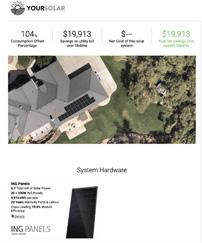
PLAN EASILY
With the interactive design features and premium imagery.

SELL SIMPLY
Personalise your proposals and pricing models so your brand shines.
nearmap.com/opensolar
Captured: 01/10/2019 Werribee, VIC

HERE COMES THE SUN: EFFECTIVE DELIVERY OF LARGE-SCALE SOLAR
The Darlington Point Solar Farm is a 333MW single-axis tracking project located approximately 10km south of the town of Darlington Point in western New South Wales. Solar Farm Constructions is one of the project contractors, and the business prides itself on delivering leading solar piling solutions, stemming from the skills and training of its staff, the precision of its equipment and the quality of its machinery. Its fleet of Vermeer PD10 solar pile drivers are crucial to ensuring consistent results over the life of a project and have been designed specifically to meet the unique needs of large-scale solar installation.
Set to be one of the largest solar farms in Australia, the Darlington Point Solar Farm occupies 1,993 acres of former grazing land adjacent to TransGrid’s Darlington Point substation at Donald Ross Drive.
It is jointly owned by Octopus Investments and Edify Energy, and has an approximate capital cost of $450 million. A power purchase agreement has been entered into with Delta Electricity for the supply of 150MW of renewable energy.
Generation is expected to start in 2020 and once operational, the solar farm will generate 685,000MWh per annum, which is enough to power around 115,000 households.
from Rich River Pile Driving have teamed up to form Solar Farm Constructions, which provides solar pile installation services as well as piling, horizontal boring and trenching packages. The company was recently engaged to carry out a section of the piling at the Darlington Point Solar Farm.
The right foundations for a successful project
As piles are the foundation upon which a ground-mounted solar panel system is built, having access to the right pile driver is crucial to ensure the piles are installed correctly.
Solar Farm Constructions has six Vermeer PD10 pile drivers all fitted with Carlson PDGrade GPS software in its fleet – with the PD10 considered the most advanced pile driver on the market.
The machine’s design ensures reliability and safety, and features a powerful hammer. Paired with the Carlson PDGrade system, the Vermeer PD10 pile driver also offers a high level of accuracy and automation, and is capable of meeting strict tolerances.

“After operating Vermeer machinery for 17 years, we understand the importance of premium reliability and service in successfully delivering a project. The PD10 hammers piles into most ground conditions without any pre-drilling, sanding or concreting,” Luke McDonald, Managing Director at Solar Farm Constructions, said.
RENEWABLE TECHNOLOGY ENERGY PARTNER CONTENT
28
“Such installation provides the most cost-effective and timely installation of ground mount piles. The solar pile driving industry is driven by key performance criteria (KPIs), and our machines enable us to deliver projects on time and to a high quality.”
Safety and support as standard
No job is too big for the Vermeer PD10 pile driver, which can install piles up to 230mm in diameter, 6m deep, in a range of ground conditions.
Vermeer’s PD10 is the only solar pile driver that features standard operator Roll Over Protection and is compliant with all Australian safety regulations. It also has a seated operator’s station, reducing fatigue for operators working long hours in the harsh, remote environments that are typical of Australian solar farms.
Solar Farm Constructions has a long-standing relationship with Vermeer through its other businesses, Rich River Pile Driving, Rich

With the Carlson PDGrade GPS system, piling contractors can benefit from high accuracy navigation and positioning, and easy-to-use software that offers a variety of features, such as navigation to pile, pile location, as-builts and production reports. The system also increases safety, as it requires less people to be near the machines when erecting piles.
The software is combined with a state-of-the-art, all-inone, GNSS integrated sensor and a rugged, Windowsbased control box, and offers a laser distance option (for piling to an elevation, contour or pile depth) to complete the machine guidance system.
The benefits of the Carlson PDGrade GPS system include:
» Reduced piling costs from anywhere between $2.85 –$8 per pile
» Improved productivity (up to 20 per cent)
» Improved efficiency as pile location is automatically located by the machine, minimising set up time and human error
» Improved accuracy within a 15mm tolerance – the flow-on effect of this is improved framing and panelling times
» Reduced surveying requirements and costs, thanks to the system’s high level of accuracy
» Work as a standalone system or as part of a fleet environment with multiple machines
River Horizontal Boring and CableNet Industries, purchasing a number of horizontal directional drills, vacuum excavation trucks, track trenchers and rock saws in addition to its trusted PD10 solar pile drivers.
“Vermeer is a major part of keeping our machines running, and the skills of our staff are matched by the technical and mechanical abilities of our machines and software. As a result, our piles are installed accurately and safely,” Mr McDonald said.
“Other project efficiency benefits include the large amount of spare parts Vermeer always has in stock, its national presence and helpful east coast support service.
going well throughout the projects, which makes for a positive all-round experience.”

ENERGY PARTNER CONTENT RENEWABLE TECHNOLOGY
29
FROM MEGA-WASTE TO MEGAWATTS
As the global community begins to grapple with the transition to a circular economy, it’s important that the energy industry, which has a central role to play in the transition, is involved with helping develop solutions to enable this move. In Tarago Australia, the local community are benefiting from the Woodlawn Bioreactor - a unique facility designed to recover waste resources from putrescible waste in NSW, and effectively turns this into clean energy in the form of biogas.

30 November 2019 ISSUE 8 www.energymagazine.com.au RENEWABLE TECHNOLOGY ENERGY PARTNER CONTENT
The Woodlawn Bioreactor is one of the largest purpose-built landfill projects in the world. What was previously a copper, lead and zinc open-cut mine is now filled with putrescible waste diverted from other NSW landfill facilities, including 20 per cent of Sydney’s total putrescible waste. This waste is then managed using advanced methods that significantly reduce the level of methane emissions released into the atmosphere.
The bioreactor generates electricity by harnessing methane gas, which is created by the decomposing waste, generating useful biogas. This biogas powers generators producing enough electricity to supply over 10,000 households with power, and at present, the facility is capable of managing consistent rates of waste infilling until the year 2047 at a minimum. The electricity produced at the conclusion of the filling will supply well in excess of 30,000 homes.
Dealing with waste
Waste is an ongoing issue for local, regional and state authorities in Australia, particularly when it comes to reducing landfill waste in conventional facilities. Operations such as the Woodlawn Bioreactor play a key role in diverting domestic waste from a typical landfill operation and turning it into a sustainable source of energy.
While the Bioreactor became operational in 2004, the technology that powers it is still considered cutting edge in terms of clean energy production for existing waste management facilities. For each megawatt (MW) of power that the Woodlawn Bioreactor produces, an estimated 0.75 tonnes of physical waste is recycled, meaning that for every tonne of waste deposited at the facility, 1.33MW of clean electricity is produced. Not only can this be used to power the facility, but also homes and businesses that are connected to the grid.
By dealing with waste and generating clean energy, the Woodlawn facility is meeting its objectives of creating a clean source of energy and recovering resources that would otherwise go unused to create a circular economy. This is made possible by the many clean energy assets at the facility, including a solar farm and a wind farm. Further, Veolia is undertaking new technology trials at Woodlawn, and has carbon credits which can be purchased through the facility.
Sustainable solutions
The facility’s methods of harnessing energy have changed and developed over the 15 years that it has been operating, with new and improved technology creating exciting opportunities for clean energy generation.
“In the bioreactor, in recent years the site completely re-thought the way we go about extracting our gas,” said Henry Gundry, Woodlawn Eco-Precinct Manager at Veolia.
“We now use a much more collaborative network of pipes focusing on extracting the biogas as it’s being produced. The site has invested heavily in purpose gas extraction systems to minimise the effects of waste settlement to ensure the longevity of the infrastructure. This has enabled the site to increase its power generation capacity from 1MW in 2008 to the current 7MW in 2019. Exciting times for the power generation business as it looks to expand to 8MW in 2020.
“Over at the power station we’ve invested in gas conditioning units to improve the reliability of the engines and reduce maintenance costs”
“And when it comes to resource recovery, we’ve invested heavily in a mechanical and biological treatment facility that can
recover ferrous material out of the waste stream and recover the organic portion as well, meaning we’re able to better work with the materials we do have, which helps to contribute to our circular economy goals.”
This mechanical and biological treatment facility (MBT) was opened in October 2017, after ten years of planning and trials at the Woodlawn Bioreactor site. Using new technology to separate organics from mixed household waste, the facility is a key component of Veolia’s goal to capture methane with the landfill bioreactor and produce renewable energy.
The $100 million plant took almost two years to construct. As Veolia’s largest MBT in the world, it is capable of processing up to 240,000 tonnes of putrescible waste into organic material annually.
The plant recycles metals, diverting approximately 55 per cent of general waste from landfill. Compost is generated and used to remediate the degraded mine-site, while also reducing carbon emissions and meeting both Australian and NSW Environmental Protection Authority (EPA) standards.
The Woodlawn site also features a 2.5MW solar farm and a wind farm.
The Woodlawn Wind Farm has been operating at the site of the Woodlawn Bioreactor since 2011. Consisting of 23 individual 2.1MW turbines with an installed capacity of 48.3MW, the wind farm produces enough energy to power approximately 32,000 average Australian households each year. This also represents a saving of approximately 138,000 tonnes of greenhouse gases a year, helping the facility to meet its circular economy objectives and continue to champion sustainability.
The solar element of the site involves a ground mount solar system with NEXTracker single-axis tracker panel technology, which directs solar panels towards sunlight throughout the day to maximise solar energy generation.
The solar farm is a 2.4MW facility, with sun tracker system and 7200 solar PV modules installed to provide energy to the biowaste reactor at MBT.
“This facility has been running since July 2019, and it’s been a fantastic initiative to offset our electricity usage on site. By offsetting costs and minimising our emissions, it’s been a great inclusion,” said Mr Gundry.
The facility’s future
If the past 15 years of planning and development are anything to go by, the Woodlawn Eco-precinct an expect to see many more technological innovations and environmentally friendly objectives achieved in the coming years.
In early 2019, Veolia sought approval to construct and operate a Solid Recovered Fuel (SRF) facility at the Woodlawn site, which will have a capacity of 50,000 tonnes per annum. If approved, this $12 million project would divert 37,400 tonnes of residual waste generated at the MBT from landfill, producing SRF material that would be used for energy recovery facilities off-site. It would also generate 25 construction jobs and three new operational roles.
As technology continues to develop and evolve, the Woodlawn facility will continue to look at opportunities to expand and support circular economy initiatives in NSW.
“Looking ahead, we’re very keen on expanding our resource recovery objective, harnessing waste heat and waste CO2, and we’ve got our on-site aquaculture farm which is capturing heat from our landfill biogas engines and we see a real potential avenue to take that forward and use that in food production,” said Mr Gundry.
“They’re big visions, and we’d really love to bring some of them to fruition in the years to come.”
31 www.energymagazine.com.au November 2019 ISSUE 8 ENERGY PARTNER CONTENT RENEWABLE TECHNOLOGY
ADVANCED AERIAL INSPECTION FOR WIND FARMS
Wind turbine inspections using Unmanned Aerial Vehicles (UAVs) save operators time and money; and reduce safety risks compared to conventional inspections. Using UAVs has made it possible to do away with manual rope-access inspection and allows owners to efficiently embrace the benefits of asset digitisation.
There are more than 3000 wind turbines in Australia that are currently operational, which means around 9000 turbine blades are subject to wear and will require regular inspection throughout their lifespan.
If Australia intends to intensify its renewables energy generation to 35 per cent of its total energy output, inspection methods for wind turbines need to be more efficient and cost-effective. Advanced AI-powered UAVs and machine-learning technology are set to disrupt and transform the operations and maintenance side of the wind industry.

CEO of Aerodyne Australia, Tony Gilbert, is confident Aerodyne’s solution for wind turbine inspection will be a game changer.
“We believe we have the ideal solution to fully digitise wind farm assets. Our vertikalitiWIND platform provides end-to-end managed solutions, from data capture using advanced UAVs to AI-driven data processing and analytics.”
With global experience gained from inspecting more than 2000 wind turbines, Aerodyne understands the pain points of its customers. By focusing on high-resolution data capture and post analytics using AI, Aerodyne ensures best quality inspections and actionable insights are delivered.
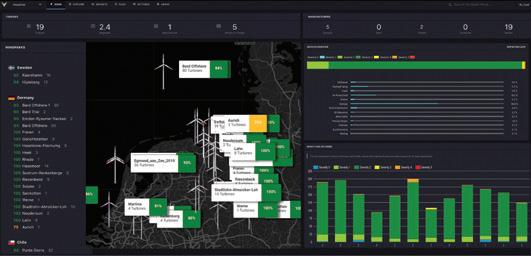
Aerodyne’s web portal platform, vertikalitiWIND, allows its customers to navigate inspection images, review the damage type and severity, and subsequently make informed decisions on repairs.
As a global player, Aerodyne has what it takes to manage the intricacies of UAV inspection for large wind farm operations. During an inspection, major defects are reported daily and detailed analysis is delivered within seven working days.

“We are very excited to offer our capabilities and we look forward to opportunities to work with wind farm owners in Australia,” said Mr Gilbert.
ABOUT AERODYNE GROUP
Aerodyne Group is a world-leading AI driven, drone-based enterprise solution provider with presence and operations in 25 countries and employing over 270 experienced UAV pilots. Aerodyne’s AI-driven solutions – Vertikaliti, myPRISM and others –are already deployed for major projects within power, renewables, oil and gas, telecommunication, construction, agriculture, infrastructure and beyond. Aerodyne Australia Pty Ltd is a subsidiary of Aerodyne Group.
Find out more at www.aerodyne.com.au or call 1800 931 866.
32 November 2019 ISSUE 8 www.energymagazine.com.au
RENEWABLE TECHNOLOGY ENERGY PARTNER CONTENT
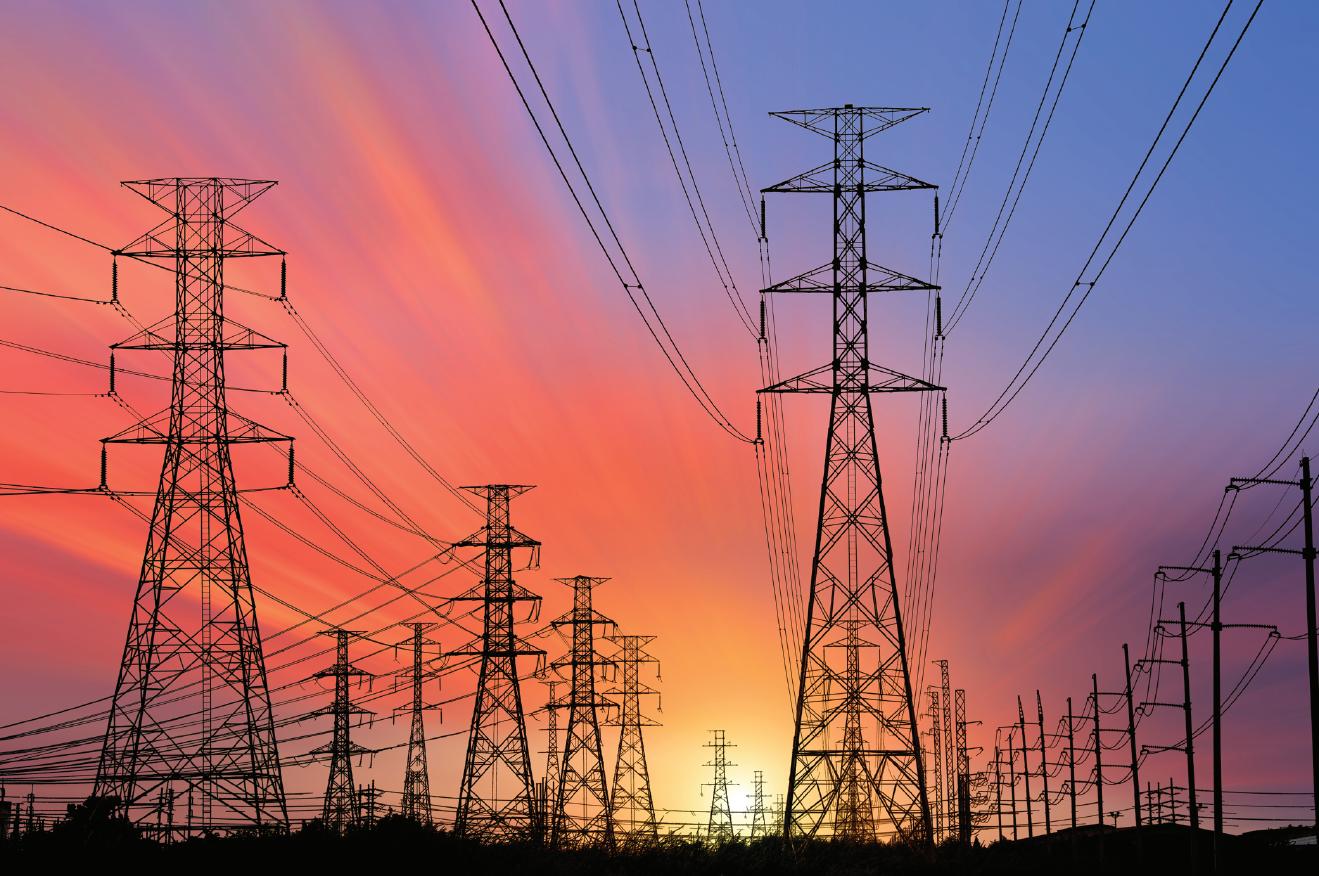









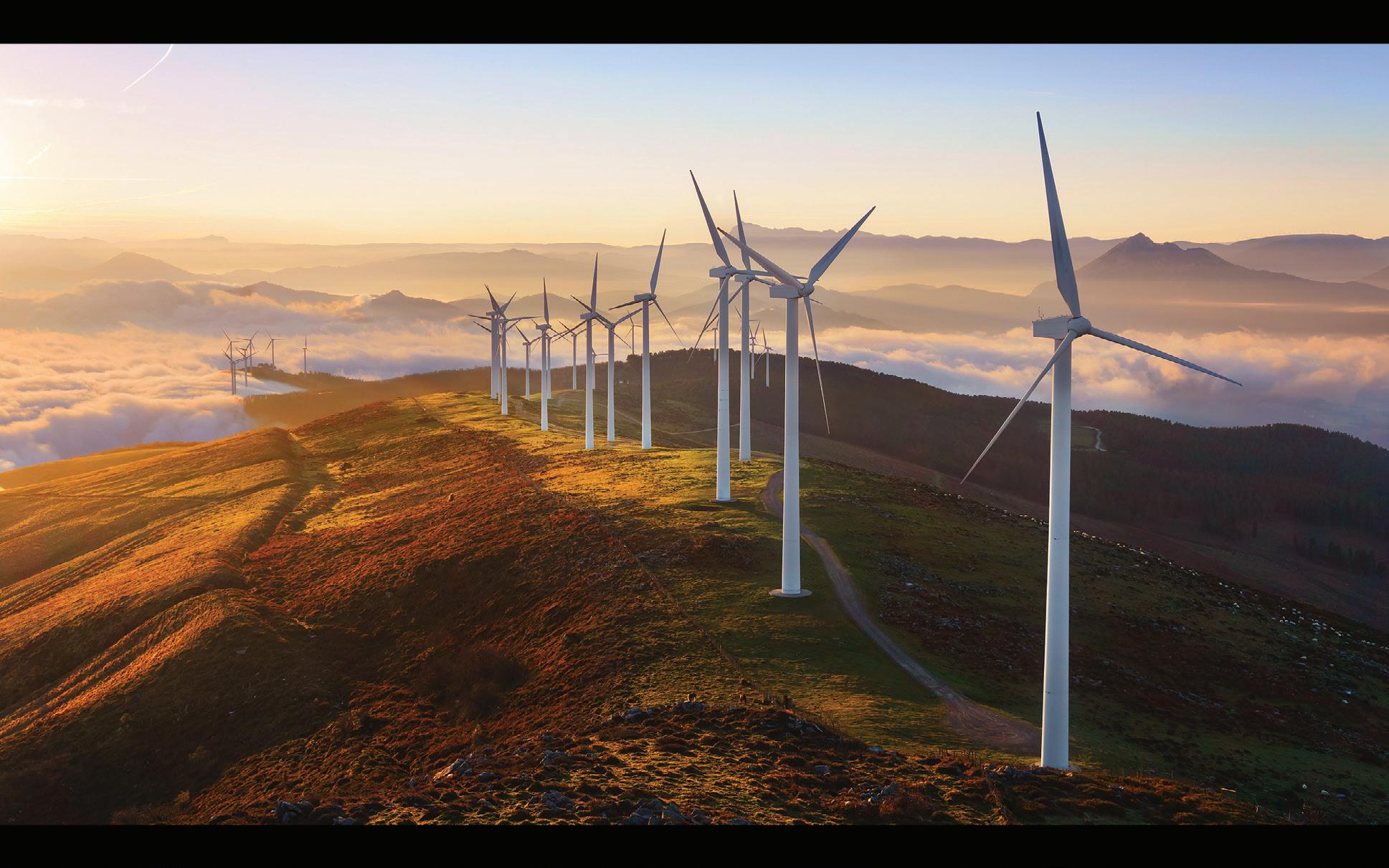

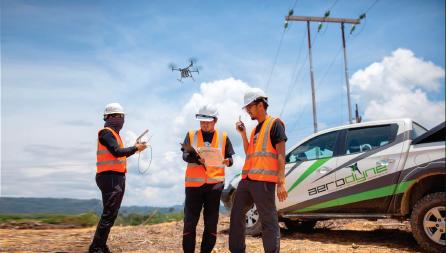



accredited Industry leading annual flight operations Powerline distance inspected Total Infrastructure critical assets inspected and managed Enterprise Intelligence & Analytics Edge AI Processing Turnkey Enterprise Application (Cloud & Mobility) Integration with existing ERP installations
Reduction in inspection
Power Grids Wind Farms Solar Farms 1800 931 866 tony.gilbert@aerodyne.com.au www.aerodyne.com.au
Cost savings of up to
time of up to
Embedded networks serve hundreds and thousands of Australians who live and work in apartment buildings, shopping centres, retirement villages, caravan parks and office buildings. These networks can provide cost benefits to those who draw energy from them by making use of innovative products and services. However, as the number of consumers using embedded networks has risen in the past few years, so too has the number of reports of negative experiences. The Australian Energy Market Commission (AEMC) has conducted a review into embedded networks, and made recommendations for changes to the laws and rules designed to strike a balance between protecting consumers and facilitating owners and operators.
As Australia’s population grows, our cities, suburbs and towns are changing and adapting. Our city skylines are growing more dense as multi-storey buildings are erected, and shopping centres are constructed and expanded, often to include highdensity residential developments. Meanwhile, our suburbs are being transformed, as houses are replaced by multi-dwelling developments. In fact, according to the Australian Bureau of Statistics, the number of occupied apartments, including flats and units, has risen by 78 per cent in the past 25 years. And this number is continuing to grow, with more than ten per cent of Australians calling an apartment home on the night of the last census.
Communal networks
Embedded networks are private electricity networks that enable owners to purchase energy as an “exempt seller” and then on-sell it to residents and business owners at the site. These networks were originally designed for small networks, such as caravan parks, but in recent years have been developed to service apartment blocks and other facilities, such as retirement villages, shopping centres and office buildings.

PROVIDING GREATER PROTEC
November 2019 ISSUE 8 www.energymagazine.com.au
34 EMBEDDED NETWORKS
In December 2016, the COAG Energy Council engaged the Australian Energy Market Commission (AEMC) to carry out a review of the regulatory arrangements for embedded networks. This review was designed to determine whether the existing arrangements continue to be appropriate, identify and assess any issues, and suggest potential solutions.
AEMC released its report in 2017, which outlined that the framework that governs exempt sellers was “no longer fit for purpose in the face of the growth in the number and scope of embedded networks”.
The review found that while embedded networks could provide some benefits to consumers, the framework did “not strike an appropriate balance between innovation, consumer protection and facilitating consumer access to retail market competition”.
In particular, it revealed that in some cases consumers could not access competitive market prices because they didn’t have a market-compliant meter; they had difficulty accessing rebates and concessions; and were not afforded protection relating to life support arrangements and outage notifications. In addition, there were reports of customers being overcharged, and not able to connect some appliances due to capacity limitations. The review also identified that customers did not have access to ombudsmen, and that embedded networks were not bound by reliability standards and Guaranteed Service Levels.
According to the AEMC's most recent Chief Executive, Anne Pearson, another outcome has been that many consumers are locked into uncompetitive arrangements.
“Everyone should have access to consumer protections on billing information, payment options, hardship support and notification of planned outages, no matter who they buy their electricity from,” Mrs Pearson said.
Actioning change
Based on this review, the AEMC proposed law and rule changes to update the regulatory framework for embedded networks. It released a draft reform package for embedded networks in January 2019, and its final recommendations in July. This followed extensive consultation with consumers, embedded network operators, retailers, developers, ombudsmen, state governments and renewable advocates.
Mrs Pearson said adopting the recommendations would give people in private networks the same protections as customers who were directly connected to the grid, by allowing obligations relating to consumer protections and retail market competition to apply directly to embedded networks and be more readily enforced.
“The changes would strengthen regulation so people in embedded networks can’t be treated as second-class customers,” Mrs Pearson said.
PROTECTION
TO EMBEDDED NETWORK CUSTOMERS

www.energymagazine.com.au November 2019 ISSUE 8 35 EMBEDDED NETWORKS
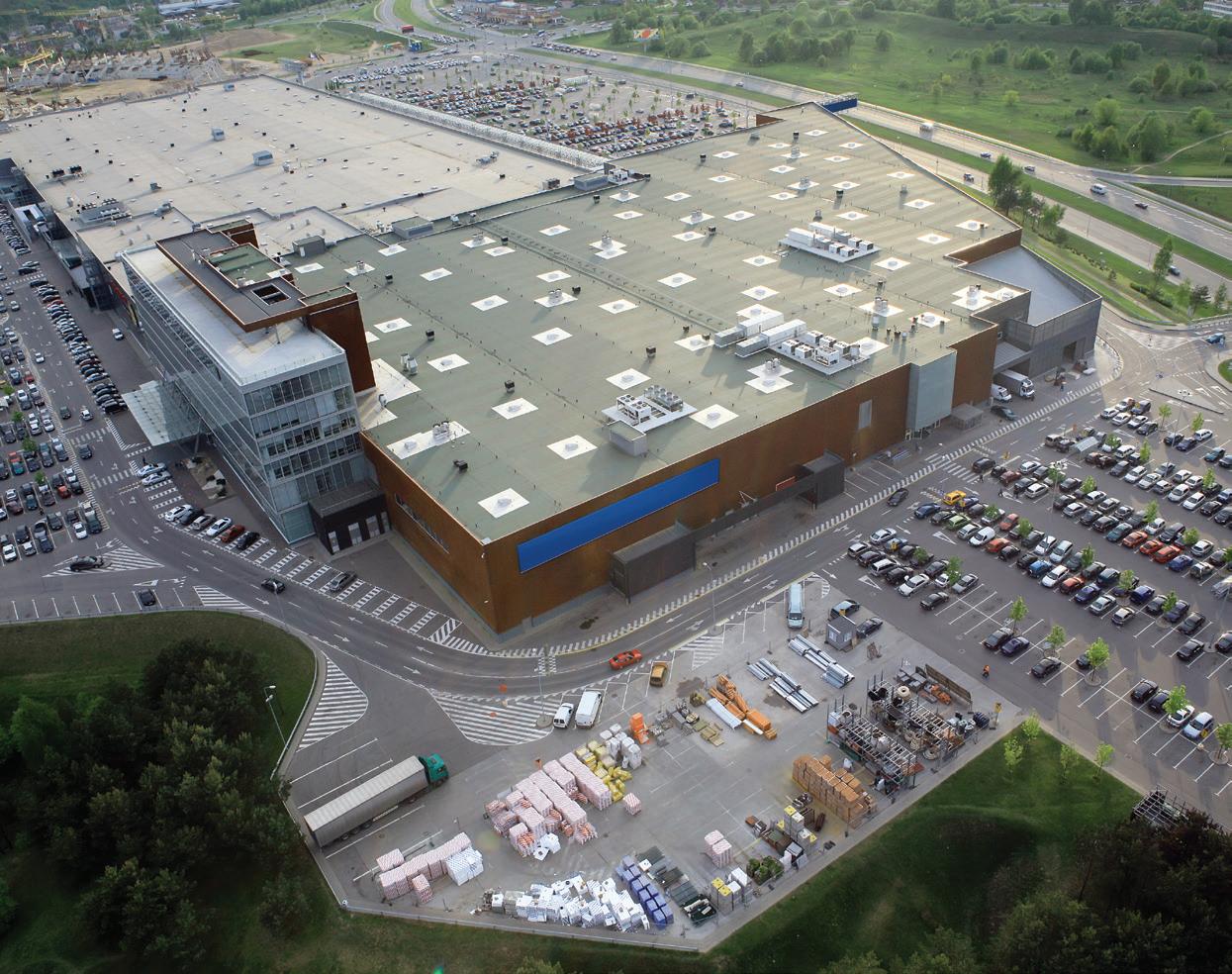
Blueprint to guide network into the future
Mrs Pearson said that once well regulated, embedded networks could offer benefits to consumers.
“Embedded networks can include innovative products and services to help manage energy costs such as on-site solar generation, battery storage and demand management services,” Mrs Pearson said.
“That’s why our recommendations aim to strike a balance by providing important consumer protections without placing undue costs on owners and operators of embedded networks.”
The changes would give embedded network customers:
» Improved consumer protections in areas including disconnections, billing information, payment options and notification of planned outages
» Access to customer hardship programs and continuity of supply in the event of retailer failure
» Stronger regulation, enhancing the Australian Energy Regulator’s ability to enforce compliance with obligations to provide protections
» Access to competitively priced market offers
» Market-compliant meters that are registered with AEMO, which make it easier for customers to switch retailer and get better information about their usage and bills
» The same rights as grid-connected customers when upgrading their connections
» Improved access to state government services such as concession schemes and emergency financial assistance; access to independent dispute resolution; and reliability.
Implementing these reforms will require collaboration.
“The COAG Energy Council, Australian Energy Regulator and Australian Energy Market Operator, as well as state governments, regulators and ombudsman, all have a role to play in delivering these important reforms,” Mrs Pearson said.
The proposed framework will be implemented after the COAG Energy Council has redrafted electricity and energy retail laws, based on AEMC’s proposals, and the laws have been submitted to the South Australian Parliament and the South Australian Minister has made the proposed rule changes. It is anticipated this could occur by mid-2020.
November 2019 ISSUE 8 www.energymagazine.com.au 36 EMBEDDED NETWORKS
Drive more piles, more accurately

Semi-autonomous pile driving technology combines the Vermeer PD10 pile driver with Carlson PDGrade machine guidance to:
• Increase productivity
• Improve safety
• Eliminate stringlines
• Reduce survey costs
Get in touch today:
info@positionpartners.com.au
www.positionpartners.com.au Australia
SE
• New Zealand •
Asia
1300 867 266 Precision Solar Farm Technology
THE NEWCASTLE THE SOLUTION FOR NSW’S
by James Markham Hill, Executive Director of Corporate Strategy, EPIK
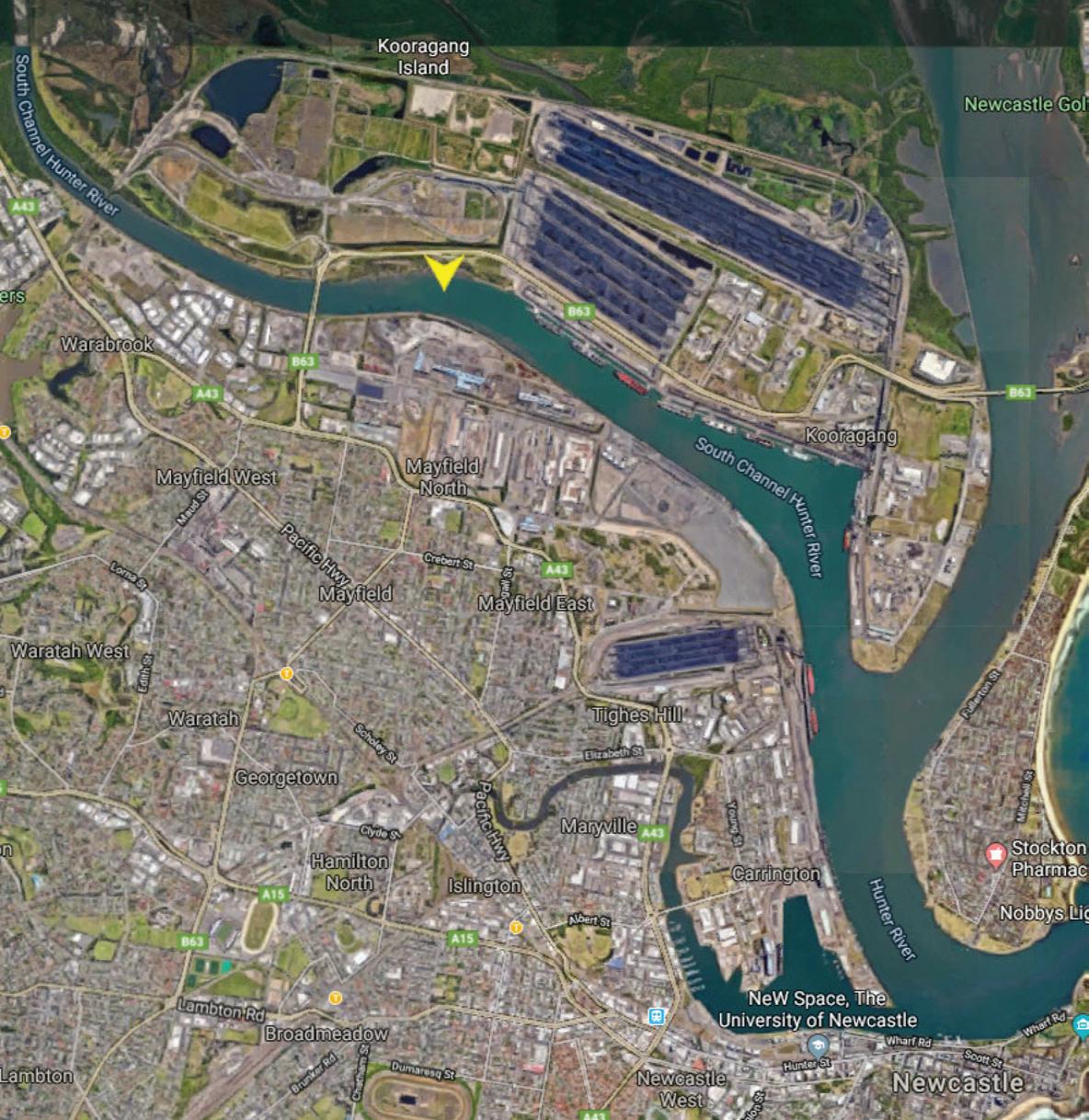
November 2019 ISSUE 8 www.energymagazine.com.au 38 DOMESTIC GAS OUTLOOK
GASDOCK PROJECT: GROWING ENERGY DEMANDS


In recent years, Australia has made substantial progress in becoming one of the world’s largest liquefied natural gas (LNG) exporters, currently surpassed only by Qatar. In 2018 alone, Australia exported approximately 69.5 million tons of LNG, providing cleaner energy to countries around the world seeking practical solutions to their complex industrial and power needs.
Executive Director of Corporate Strategy at EPIK, James Markham, outlines why the Newcastle GasDock Project is critical for Australia’s natural gas industry.
Recognising the important role that Australia plays in providing natural gas overseas, the idea that New South Wales could soon become an LNG importer has raised eyebrows, but in our increasingly connected world, it is easy to forget that Australia is a continent with vast distances and limited infrastructure separating production basins from demand centres – as is the case in New South Wales.
Historically, the majority of Australian LNG was produced using gas sourced from the basins in Western and North-Western Australia; however, with the start-up of LNG export facilities in Gladstone, Queensland in 2015, Australia’s North East has entered the global business.
At the same time, declining domestic gas production in Australia’s South East, compounded by existing pipeline capacity constraints, resulted in NSW facing increasing challenges securing long-term, competitive natural gas supplies, impacting residential users, manufacturers, industry, and power producers, among others.
The state of New South Wales
Currently, New South Wales imports approximately 95 per cent of its total annual gas consumption from other states via natural gas pipeline, and according to estimates from the Australian Energy Market Operator (AEMO), without further development, NSW will face increasing challenges securing adequate supply. While heightened prices take a toll, the lack of stable, secure supply has resulted in dramatic price swings and market instability, making it increasingly difficult for businesses to plan for the future.
Complicating matters further, NSW relies on coal for approximately 80 per cent of its power generation capacity, and many of these existing facilities, including the 2000MW Liddell coal-fired power plant, are planned to come offline in the coming years, necessitating a shift in the existing energy mix. While it is likely that a significant amount of new generational capacity will be provided via increased development in renewables, such as wind and solar, the state will need to find a balanced solution between adding renewable energy, which is typically intermittent, and maintaining baseload power and grid stability in the long-term.
www.energymagazine.com.au November 2019 ISSUE 8
39 DOMESTIC GAS OUTLOOK
Aerial view of the location for the LNG terminal, and nearby pipeline assets.
James Markham Hill.
For these reasons, natural gas, via LNG imports, provides a complementary solution to both NSW’s energy and environmental needs, while also presenting a lower-cost alternative to existing supply.
Criticality
At EPIK, the objective is to provide the most competitive infrastructure solutions to help solve critical gas and power needs in markets around the world. Through its wholly owned Australian subsidiary, Newcastle GasDock Company (NGDC), EPIK is developing the Newcastle GasDock LNG Floating Storage and Regasification Unit (FSRU) at the Port of Newcastle to provide long-term, lowest-cost natural gas.
In August 2019, the state of NSW declared the Newcastle GasDock project as Critical State Significant Infrastructure (CSSI), in part due to the project’s strong potential to address the long-term energy security of the state. Compared to alternatives, EPIK believes that LNG imports through its proposed facility at the Port of Newcastle provides a lower-cost solution for the secure and competitive supply of natural gas on a long-term basis.
Utilising an FSRU, which is essentially an LNG carrier with vaporisation units on its topsides allowing for the import of natural gas directly into the market via a highpressure gas arm, the Newcastle GasDock terminal will be capable of supplying more than two million tons per year (MTPA) of LNG, or the equivalent of over 80 per cent of NSW’s annual natural gas consumption. As designed, the terminal will be capable of supplying up to approximately three times this volume – the actual volumes being driven by demand as opposed to operational infrastructure limitations.
Newcastle and Australian Advantage
Situated in an industrial hub, the Port of Newcastle – an economic engine for the region – is proximate to both NSW’s single largest natural gas user and its single largest power user, consuming more than ten per cent of NSW’s annual gas consumption and over 12 per cent of its power usage respectively.
Sitting near the end of the existing pipeline network, where prices are typically highest, Newcastle is an optimal entry point for new supply to be injected, placing downward pressure on prices locally, while still providing competitive access to the broader NSW market through the Sydney Short-Term Trading Market (STTM) via the
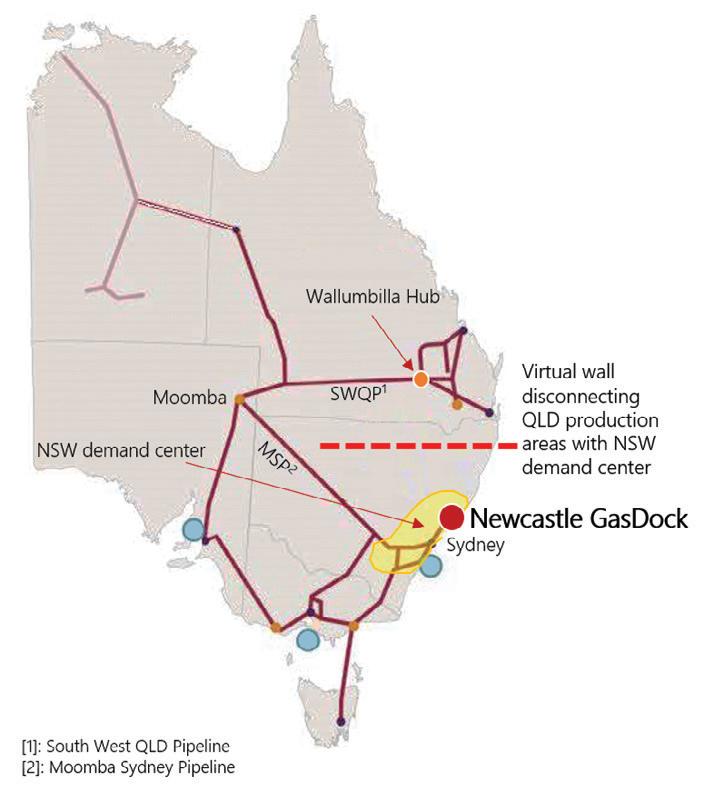
existing Jemena pipeline located less than 2km away.
More broadly, with China, Japan and South Korea representing the three largest LNG importers in the world, seasonal global LNG pricing is dictated by northern-hemisphere demand, providing an opportunity for Newcastle GasDock to provide access to lowest-cost LNG during NSW’s highest demand periods.
As recently as August, spot-market LNG prices fell to as low as $US4/metric million British thermal unit, at which point the delivered cost of LNG represents a significantly more competitive alternative to existing and anticipated domestic natural gas. While this price is unusually low, growing global LNG supply and limited access to liquid downstream markets help make LNG imports into NSW increasingly competitive against domestic alternatives and attractive to global LNG portfolio players and traders interested in gaining access to the NSW market.
The Newcastle GasDock project is distinguished from competing LNG import projects in Australia by providing LNG
storage and regasification services to Australian and international players looking to bring competitively sourced LNG into Australia’s southeast gas market through its proposed terminal.
EPIK has engaged Australian EPC firm Watpac for the exclusive provision of design, engineering and construction services for the onshore infrastructure components of the project. In addition, EPIK has a strategic partnership with Hyundai LNG Shipping and is supported by consultants including Arup and K&L Gates among others.
Pending approvals and a positive final investment decision, the construction of the terminal represents a potential, direct capital investment of up to $250 million in NSW, on top of the significant social, economic and environmental benefits the project would provide over the multidecade lifespan of its operations.
EPIK anticipates taking FID on the Newcastle GasDock FSRU terminal in 2020 and initial operations beginning in 2021.
November 2019 ISSUE 8 www.energymagazine.com.au
40 DOMESTIC GAS OUTLOOK Potential location for the LNG terminal.
16-19 March 2020
Sheraton Grand Sydney Hyde Park Australia
Australia’s most comprehensive domestic gas market event
IT’S WHERE THE DOMESTIC GAS INDUSTRY MEETS

Ben Wilson Chief Executive Officer Australian Gas Infrastructure Group

Daniel Walton National Secretary The Australian Workers Union

Matthew Kay Chief Executive Officer Beach Energy

Samantha Read Chief Executive Officer Chemistry Australia
WHY ATTEND ADGO 2020?
Hear from those that shape the market; industry CEOs, Ministers and the biggest gas buyers, about their views on the best way to navigate current issues
Access expert analysis on all key market drivers to help you better understand the future market direction
Examine opportunities to increase supply with updates from major projects, leading juniors and new basins
Understand the changing role of gas in the Australian economy with a focus on manufacturing
Analyse the role gas could play in the energy mix to help ‘balance’ more intermittent renewables
Get insights into the future regulatory and policy environment from state federal policy makers























Proudly supported by: Major Sponsor:
REGISTER TODAY! +61 (0)2 9977 0565 info@questevents.com.au www.adgoconference.com.au Join us. Mention the promo code ENERGY_15 to receive 15% off registration.

NOT JUST HOT AIR: WASTE-TO-ENERGY IN URBAN ENVIRONMENTS
by Will Macintosh, Senior Associate, Macpherson Kelley
42
DOMESTIC GAS OUTLOOK
While there is considerable opportunity for Australia to develop a burgeoning biogas industry, leveraging the significant landfill sites we have around the country, an inappropriate regulatory regime is hampering efforts, writes Will Macintosh.
Australian households and businesses produce 4.3 megatonnes of non-hazardous food waste per year. Alarmingly, 87 per cent of this waste is sent to landfill with only one per cent going to energy from waste facilities.
The continued use of landfill to store food waste presents three problems. First, and most obviously, it requires the use of land that is tied up for this use for a long period of time. Second, it requires the use of fossil fuels to transport the waste from where it is generated to the landfill site. Third, organic waste sent to landfill produces biogas (also known as landfill gas), which contains a high proportion of methane – a flammable greenhouse gas up to 25 times more potent than carbon dioxide. However this gas can be used as a source of energy.
Biogas is produced by the organic process of anaerobic digestion – organic waste decomposes in the absence of oxygen. The natural process of anaerobic digestion occurs regardless of whether a small or large amount of substrate is present. It is, therefore, eminently scalable.

If organic waste which is currently sent to landfill was instead able to be subjected to anaerobic digestion in a controlled manner near the site at which the waste is generated, four key effects would result:
1. The land use of landfill would be diminished as the volume of waste presently sent to landfill could drastically decrease
2. The contribution of landfill to the greenhouse effect would be diminished as the volume of methane released into the atmosphere from landfill would decrease
3. The fossil fuels ordinarily used in transporting such waste to landfill would be saved
4. Urban land users could enjoy a renewable energy source for cooking, heating, and power generation
However, the production of a flammable gas within an urban environment necessarily requires an appropriate legal regulatory framework to ensure that potential impacts are managed and safety measures are put in place.
43 DOMESTIC GAS OUTLOOK
The existing biogas production landscape
The production of biogas, on an industrial level, is not a new concept in Australia. For example:
» Stanwell Corporation has operated biogas electricity cogeneration plants, using biogas from its Townsville wastewater treatment plants, since 2000
» As at 2012, 55 per cent of Australia’s wastewater treatment plants were producing biogas
» As at July 2018, five Queensland piggeries operated onpremises biogas production facilities
» At the time of writing, 14 anaerobic digestion facilities were registered in Queensland
In March 2018, the Queensland Government announced a number of proposed reforms to the Queensland recycling and waste industry. Underpinning those reforms was the introduction of a proposed levy, imposed at $35 per tonne, on waste sent to landfill. Following on from this, in April 2018, the Local Government Association of Queensland’s policy executive voted to implement a zero-waste-to-landfill target for its members by 2028, with the target to be underpinned by the implementation of waste-toenergy strategies.
However, with the Queensland Government’s waste to energy commitment appearing to remain aspirational as no further legislative change (other than the introduction of the waste levy) or funding arrangements have since been implemented, the LGAQ has taken the lead in championing the organic waste-toenergy cause.
In July 2018, it commissioned a report which found that anaerobic digestion was the most financially viable energy from waste technology across the state. Importantly, the LGAQ’s focus has been placed on the establishment five to eight industrial waste from energy facilities but does not extend to waste-to-energy on a small scale in urban environments.
Industrial-scale anaerobic digestion projects are already well-established in Queensland, and there’s clearly an appetite for increasing the use of these facilities. However, there appears to have been little to no consideration of the implementation of small-scale anaerobic digestion facilities within urban environments in Queensland.
While there do not presently appear to be any documented small-scale urban biogas production facilities in operation in Queensland, a pilot micro anaerobic digestion project commenced in 2013 in the borough of Camden in central London. A 2017 academic case study confirmed the broad feasibility of the concept.
With the feasibility of small-scale urban projects having been confirmed internationally, Australian authorities should consider similar opportunities here, such as at a household level to power gas burners for cooking or hot water systems, or for multi dwelling developments for heat and power generation. Systems for these purposes are currently available.
Regulatory regime
Unfortunately, the present regulatory regime in Queensland and elsewhere in Australia has been designed to regulate waste to energy on an industrial scale and a) it is not receptive to small-scale urban organic waste to energy applications; and b) it provides significant barriers to entry in the form of at best ambiguous, and at worst overly prescriptive, legislative licensing and safety requirements and provisions of planning schemes which fail to contemplate these applications.
While there must be appropriate safety controls in place to minimise potential adverse impacts, as there must also be an appropriate planning assessment regime in place to ensure orderly development, the significant advantages of biogas production in urban environments are such that its proliferation must be encouraged.
Sensible amendments to the regulatory regime, which appropriately balance the interests of all stakeholders, are available to be implemented. These include minor amendments to legislation to remove biogas' classification as "petroleum", and amendments to planning schemes to properly define small-scale anaerobic digestion as a use and adopting an appropriate development code which applies to that use.
Where to next – bridging the thought leadership gap
Changes to the regulatory regime rarely occur without a compelling industry case or a groundswell of community support. In this instance, there are significant commercial advantages available to the waste management and energy industries if a wide uptake of urban anaerobic digestion is realised.
The waste management industry has the capacity to ensure households properly separate organic waste to enable it to be processed into biogas. The energy industry has the capacity, as has occurred with household solar power, to commercially implement energy production from that biogas. If a three-way relationship of cooperation is developed between the two industries and households, the industries will cement themselves as key players in, and an integral part of, the emerging circular economy.
In the words of Ricky Bobby from Talladega Nights: "If you ain't first, you’re last".

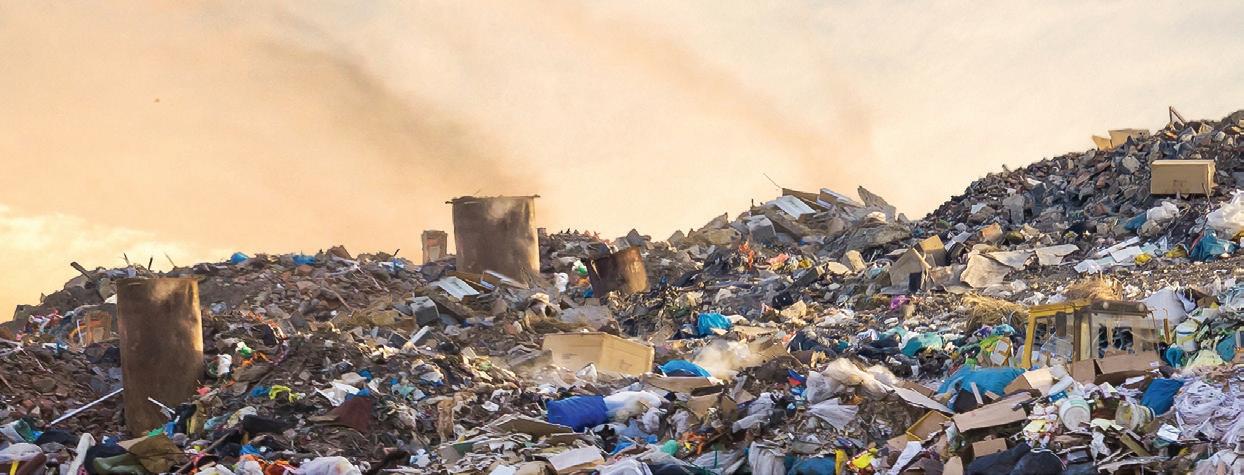
DOMESTIC GAS OUTLOOK 44


HOW BEHAVIOURAL SCIENCE CAN HELP US MANAGE ENERGY DEMAND ON OUR HOTTEST DAYS
by Min-Taec Kim and Karen Tindall, Senior Advisors, The Behavioural Insights Team
On hot summer days, power usage in Australia skyrockets as households and businesses turn on their air conditioners. Energy usage can increase by over 45 per cent on these days, particularly between 3pm and 6pm. The Behavioural Insights Team recently conducted research in conjunction with Powershop to gain insights into the best ways to influence the behaviour of energy users during peak demand periods to reduce the risks to the network.
46
DEMAND MANAGEMENT

The Australian Energy Market Operator (AEMO) has warned that the risk of black-outs is increasing as older coal power plants are closing over the coming decade. In January 2019, 375,000 households were without power for an hour in Victoria and South Australia due to extreme temperatures. Victoria is at the highest risk of blackouts this upcoming summer, particularly with two power stations temporarily out of service after faults early this year.
Traditionally, we have responded to these threats by building additional generation capacity. These emergency power plants operate for as little as 20 hours a year, are expensive to build and run, and cause the cost of energy to increase by up to 140 times during these peak periods.
There are many benefits for policy makers to develop alternative programs — such as behavioural demand response — that help reduce the amount of electricity we use, rather than continuing to invest in emergency generation capacity. The wheels are already in motion, with the Australian Renewable Energy Agency (ARENA) and the AEMO recently funding ten pilot projects to investigate how behavioural demand response initiatives could be used to manage electricity supply during extreme energy peaks.
Using behavioural science to manage energy demand
The Behavioural Insights Team (BIT) takes insights about how individuals respond and make decisions to design policies or approaches that can encourage, support and enable people to make better choices. Recently, BIT partnered with Powershop Australia to improve its existing demand response program, “Curb Your Power” (CYP) by applying behavioural insights.
Launched in summer 2017-18, Powershop invited all Victorian customers to opt-in to its CYP program. When a peak-demand event occurs:
» CYP customers are prompted by text message to curb their electricity usage during a one to four hour period
» All CYP customers receive an email about the reduction compared to their personalised power usage target (calculated based on their usage history)
» $10 discounts on their next Powershop electricity bill were provided to those that met their target
Ahead of summer 2018-19, BIT Australia worked with Powershop again to test four new variants of communications for the CYP program in Victoria to see whether it could be improved. BIT also tested a fifth variant that changed the design of the program rather than just the content of the communications.

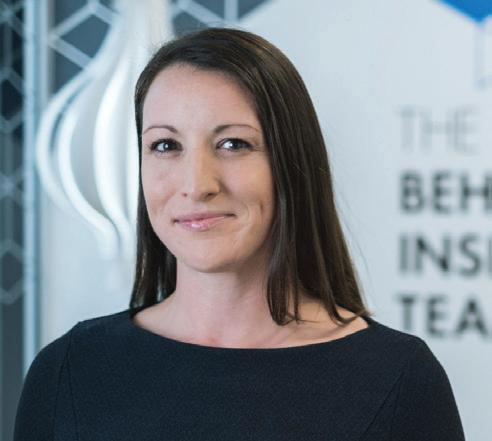
47
Min-Taec Kim, Senior Advisor, The Behavioural Insights Team Australia
DEMAND MANAGEMENT
Karen Tindall, Senior Advisor, The Behavioural Insights Team Australia

Proportion of Powershop customers who ended up receiving SMS messages for each variant. BIT Australia report: Applying behavioural insights to Powershop's Curb Your Power program
Customers were randomly allocated to each of the below variants:
1. Simplified communications: simplify last year’s communications to be clearer and more direct
2. Prize draw: entry into a prize draw each time customers successfully lowered energy usage below their personalised target
3. Join the club: communications were edited to evoke a sense of collective identity and community purpose. This was done by describing CYP as a special club for those who wanted to help reduce energy usage at critical times
4. Choose your own adventure: customers were enabled to choose their reward — either the original $10 power credit, or a donation of $15 in their name to renewable energy
5. Message by default: for this variant, customers were enrolled into the CYP program by default and could opt-out if they chose to
Powershop and BIT Australia then tested the effectiveness of each approach by looking at changes in energy consumption during two peak events in January 2019.
The results and findings
Enrolling people into the program by default was by far the most effective approach. By giving customers the ability to opt-out of receiving peak-demand SMS messages (variant five) rather than opting-in (variants one to four), far more customers knew that there was a peak-demand event occurring.
The implication of this was two-fold. Not only could Powershop have a bigger impact on the grid, but energy usage during peak events was also much lower on average per person, for those that received the SMS messages. This was a reduction of 12 per cent compared with the per person average for those receiving simplified communications.
This is important for two reasons. Firstly, it shows that these peakdemand SMS notifications are effective at reducing energy usage, even when the customer did not know they were going to receive them. Secondly, we found that customers who had not explicitly made the decision to opt-in to a demand-response program could have more impact on the grid and their energy savings as there was more room to reduce their usage. Those who had decided to sign up to CYP ahead of time were already more inclined to be energy conscious.
The impact of simple notifications
This trial shows that simple notifications in real-time can have the largest impact on power usage. In fact, of the four communications variants, the simplified version of last year’s communications was the most effective at recruiting people into the program and had higher open and click-through rates. This highlights the importance of keeping messaging simple and sharp.
Although the SMS messages were sent from Powershop in the trial, these messages could be sent by a regulator or a government body. Using these channels would radically increase the reach of demand response programs and prompt action when peakdemand events are happening.
The trial also shows the value of drawing on insights from behavioural sciences and robust testing them in the real-world setting. BIT has successfully applied behavioural science across a range of policy areas, from healthcare and humanitarian aid, to energy reduction.
These findings can be replicated to other energy users across Australia, providing a cost-effective way to achieve a ten per cent reduction in power usage during peak events, impacting both consumers and the grid. A simple series of text messages might make the difference in preventing black-outs, preventing the cost of energy from sky-rocketing, and needing to build costly and dirty coal power plants.

Relative reduction (%) of energy usage per person, by condition. BIT Australia report: Applying behavioural insights to Powershop's Curb Your Power program
November 2019 ISSUE 8 www.energymagazine.com.au 48 DEMAND MANAGEMENT
POWERING ON FOR A SAFE SUMMER
by Andrew Dillon, CEO, Energy Networks Australia
Ensuring safe and reliable electricity is delivered to customers through the hotter months can be challenging, with bushfire mitigation a key focus. In the lead up to summer, vegetation management is an important safety tool.
What is network safety?
Network safety is like a tree with two main branches – one relating to people (occupational health and safety) and the other network and asset safety. Asset safety diverts into its own subbranch of vegetation, bushfire, lightning and live line work1
Vegetation
Networks have obligations to undertake vegetation clearance around powerlines to ensure community safety and power reliability. Maintaining clearance distance between vegetation and powerlines is fundamental to network safety and minimising the risk of bushfire.
Lesser clearance distance is required for low voltage (LV) lines, while greater clearance is needed for high voltage (HV) lines to maintain network safety. Pruning trees to minimise customer outage risk and bushfire starts are one of the largest recurring operational costs to networks2

Networks working together with communities
In collaboration with councils, landholders and communities, SA Power Networks has developed a protocol for vegetation management near powerlines including a powerline-friendly list of tree species customised to different regions and environments, to ensure the right tree is planted at the right places.
SAPN is also working on alternatives to regular pruning, including tree removal and growth regulator trials.
Innovation in vegetation management
Networks are pursuing innovation in Light Detection and Ranging (LiDAR) as an asset inspection tool in vegetation management. Similar to radar, LiDAR uses pulses of laser light to measure the distance from air to powerline and surrounding vegetation, as depicted in Figure 23
LiDAR measures clearances and helps predict vegetation growth and replaces the need for costly manual surveying.

Bushfires
Burning vegetation that is close to powerlines may damage them, but vegetation management minimises this risk. What is harder to manage is wind-blown tree debris that originates outside of the clearance zone and some distance away from the powerline.
Single wire earth return (SWER) lines comprise thin and typically long conductors. Under certain fault conditions, such as when a tree falls over a powerline on a windy day, the SWER conductor is prone to breaking and can fall to the ground or into vegetation. This can create a short circuit fault, which in the right conditions has a high risk of starting a bushfire4
Innovation in bushfire mitigation
In Victoria, AusNet Services and CitiPower Powercor have significantly changed their approach to vegetation and asset management, with very detailed and targeted programs of work directed at minimising bushfire risk from powerlines.
This has led to the installation of world-first technology, Rapid Earth Fault Current Limiters (REFCL), which quickly detect faults and reduce bushfire risk.
United Energy (with support from AusNet Services and CitiPower Powercor) is developing a new low-cost control tool known as ‘broken conductor fault detection technology’ on SWER powerlines for bushfire mitigation5
Evoenergy in the ACT is also using a device known as Pulsecloser IntelliRupter for bushfire mitigation. It uses less energy to test for fault and reduces stress to the powerline.
The message to customers from networks is this: despite the significant investments to reduce bushfire risk, powerlines still pose a hazard and are not the only cause of bushfires. If you live in a bushfire prone area, know the importance of having a bushfire preparedness plan. Make sure your plan is up-to-date and remember that on total bushfire days there is a higher than normal chance of power being off, so make sure your plan doesn’t rely on electricity such as a grid-connected electric water pump for firefighting.
1 https://www.ausnetservices.com.au/-/media/Files/AusNet/About-Us/Determining-Revenues/Distribution-Network/Customer-Forum/Week-1/Networks-101-Customer-Forum.ashx?la=en
2 https://www.energynetworks.com.au/sites/default/files/ena_nsp_veg_mgt_var_report_20160330_final.pdf
3 https://www.powercor.com.au/safety/bushfire-mitigation-program/year-round-program-of-work/
4 https://knowledge.aidr.org.au/resources/bushfire-black-saturday-victoria-2009/
5 https://www.energy.vic.gov.au/__data/assets/pdf_file/0015/430107/Broken-SWER-Conductor-Public-Report.pdf
49 DISASTER MANAGEMENT
Figure 1. Pruning around different voltage powerlines in South Australia. (Source: SAPN)
www.energymagazine.com.au November 2019 ISSUE 8
Figure 2. Using LiDAR for vegetation management. (Source: CitiPower Powercor)

THE BUILDING BLOCKS FOR RESILIENT CITIES
Resilience has been a buzz word in the infrastructure industry for quite a while now. But what do we actually mean when we talk about resilient cities? We spoke to Toby Kent, Chief Resilience Officer at City of Melbourne, about why cities need to have a resilience focus, and the benefits that flow when this approach is adopted.
DISASTER MANAGEMENT
50

Toby Kent is very well known in resilience circles –he has created and implemented resilience and sustainability strategies across a range of sectors; and since the late 1990s he has worked with governments, communities, industry sectors and many other stakeholders on five continents. He’s currently the Chair of the Future Business Council and has been Melbourne’s Chief Resilience Officer for just short of five years.
In his current role with Resilient Melbourne, he has been tasked with improving the resilience of not just the City of Melbourne local government area, but the entire metropolitan region in Melbourne, which encompasses 32 local government bodies.
According to Mr Kent, the core function of a city Chief Resilience Officer is to understand the chronic stresses that affect the city, either currently or in the future, to put in place actions that can either entirely avoid things going wrong, or at least minimise them, and be better prepared to be able to recover when things do go wrong.
shocks. But when it comes to the way the city prepares for and deals with chronic stresses, there is room for improvement – which is where Mr Kent and his team come in.
One of the projects that Mr Kent and his team are working on is the Urban Forest Strategy, which will address some of Melbourne’s chronic stresses, including mental and physical well-being and a loss of natural habitat. But in addition to this, the forest will see Melbourne using trees and other vegetation to reduce the urban heat island effect and reduce flooding.

Building on this, 100 Resilient Cities established a definition, which Mr Kent also uses to guide his work, of the seven qualities of resilience. The identification of these qualities drew upon decades of research to establish a definitive list.
The qualities are as follows:
» Reflective – cities use past experience to inform future decisions
» Resourceful – they recognise alternative ways to use resources
» Inclusive – cities prioritise broad consultation to create a sense of shared ownership in decision-making
» Integrated – they bring together a range of distinct systems and institutions
» Robust – they have well-conceived, constructed and managed systems
» Redundant – they feature spare capacity purposefully created to accommodate disruption
» Flexible – cities have a willingness to adopt alternative strategies in response to changing circumstances
“The important thing with resilience is about understanding that it permeates every single element of a city or organisation,” Mr Kent said.
“There is a massive preparedness element to resilience – of preparing a city, environment or organisation to cope with any chronic stresses that it might face.”
CHRONIC STRESSES VERSUS ACUTE SHOCKS
At Resilient Melbourne, Mr Kent’s role focuses a lot on chronic stresses and considering how they interplay with acute shocks.
Chronic stresses are often defined as ‘slow moving disasters’, circumstances that, unaddressed, weaken the fabric of a city over time. This includes things like climate change, high unemployment, high levels of inequity, over-burdened or inefficient public transportation, and chronic food and water shortages.
Acute shocks on the other hand are sudden, sharp events that threaten a city, including extreme heat, floods, disease outbreaks and cyber attacks.
The distinction is an important one to make, and it exists for a pretty simple reason. The reality is, Melbourne already has some of the best services and organisations in place to deal with acute
“This is what we get really excited about,” Mr Kent said. “Putting something in place which might achieve one outcome, but can also have a range of flow-on benefits for the city.”
This leads into another important aspect of the work, which is to look for ways to frame resilience-improving initiatives for the city in a positive way.
“A large part of what we do is to try to understand how we can take action in a way that is framed positively, rather than simply framing it negatively, which automatically creates a degree of fear and anxiety, and hence denial or resistance amongst people,” Mr Kent said.
“It’s important that through our work, we actually create a vision of something that is appealing. A lot of what we do becomes about how we shift mindsets and understanding.”
PREPARING FOR DISASTER, NOT JUST REACTING
With Mr Kent spending a lot of his time looking at how we can be better prepared for the different events that might affect a city, he says there is considerable opportunity to invest further at this stage of the disaster cycle for improved outcomes.
“At present, 97 per cent of disaster spending is spent post-fact, when really, that same amount of money should be starting to be invested upfront,” notes Mr Kent.
“By way of example, if we took some of the money we spend in bushfire recovery and invested more of that in burying cables, we would likely be in a better place.”
The reality is, when it comes to resilience, there’s a lot we can be doing to improve our approach at an organisational and city level.
But for Mr Kent, the key is to view these areas for improvement as opportunities to make our organisations and cities happier, healthier and safer spaces to move around in.
“What we want in our society and in our infrastructure is a really healthy mix of diversity of all types. Different sources of energy, alternative modes of transport, different systems on a range of levels, so that when something goes wrong it can be isolated and dealt with, rather than spreading impacts further than they need to go.”
At its core, it’s this capacity for diversity which can make our cities and systems more resilient; and this will be the space where forward-thinking resilience and disaster managers will achieve some of their best outcomes.
Toby Kent is the keynote speaker at Disaster Management, a two-day event taking place in Melbourne from November 21–22, looking at the ways critical infrastructure owners and local governments can better prepare for, survive and thrive in the face of major disaster events. For more information, head to disaster-management.com.au
51 DISASTER MANAGEMENT
Toby Kent.
www.energymagazine.com.au November 2019 ISSUE 8
DETECTING CYBER INTRUSIONS IN A DIGITAL SUBSTATION
The threat of cyber attack is very real, as energy utilities rapidly move to digitise their operations. As part of the digitisation process, it’s imperative that every precaution possible is taken when it comes to cyber security.
Substations provide potential attack vectors for cyber attacks. If an attacker is able to influence one or more substations, this can have severe consequences to the grid. Multiple layers are therefore necessary to ensure the cyber security of substations. Unfortunately, cryptography, firewalls or 'air gaps' cannot prevent all types of attacks to a substation. Measures are thus needed to detect threats not only in the control centres, but also within the substation, to enable a quick response.
Cybersecurity with OMICRON
For IEC 61850 substations, the whole automation system, including all devices, their data models, and their communication patterns is described in a standardised format – the SCL. System Configuration Description (SCD) files normally also contain information about primary assets and, for an ever-increasing number of substations, even the single-line diagram is present.
This information allows a different approach to be used for detecting intrusions. The monitoring system can create a full system model of the automation and power system and it can compare each and every packet on the network against the live system model. Even the variables contained in the communicated (GOOSE, MMS, SV) messages can be evaluated against the expectations derived from the system model. This process is possible without the need for a learning phase, just by configuration from SCL. This approach is implemented in the new functional security monitoring system StationGuard.
StationGuard: the intrusion detection system
StationGuard is easily configured by importing the plant's SCD file. The IT equipment that was not included in the SCL can be assigned a respective role such as engineering PC or test PC. Alarm messages are not listed in IT jargon, but are summarised and traced back to the causal processes in the substation. The alarm display and descriptions allow protection and control technicians to work together with the IT security officers in the analysis of alarms.
StationGuard's maintenance mode feature allows you to avoid false alarms during maintenance and routine protection tests, while still providing full security. For all data traffic over IEC 61850 communication protocols, not only is the protocol structure analysed, but all transmitted signal values and their time stamps are also analysed. This also permits more complex measurements, such as the transmission times of telegrams, synchronisation errors or critical states of the IEC 61850 quality bits.

The IDS works with a crypto-chip that protects against software manipulation. It uses a secure boot chain, full encryption of all data and communication, and a specially hardened Linux operating system.
StationGuard not only detects security threats, but functional problems of IEC 61850 communication and of the IEDs are also detected – which is also helpful in the FAT and SAT phase. Intrusion detection systems that display detected events in the language of protection, automation and control engineers have the advantage that PAC and security engineers can work together to find the cause of events.
For more information, contact Ravi Desai at ravi.desai@omicronenergy.com
November 2019 ISSUE 8 www.energymagazine.com.au 52
DISASTER MANAGEMENT ENERGY PARTNER CONTENT
Andreas Klien Cyber Security Expert


Effectively detect and react to cyberattacks
Along with the growing digitization and networking of energy systems, there is also a growing danger that IEC 61850 systems will become the target of cyber attacks. Therefore, cyber security must also play a vital role in the planning and operation of substations. The StationGuard monitoring system allows utilities to detect cyber attacks and malfunctions in substations immediately so they can react to them at an early stage.
www.omicronenergy.com/stationguard info.australia@omicronenergy.com
Australia: 03 9473 8400
WEATHERING THE STORM - ARMING AUSTRALIA’S GRID AGAINST THE EVOLVING THREAT LANDSCAPE
by Simon Vardy, Utilities Strategy Lead, Accenture Australia and New Zealand; and Tony Histon, Utilities Transmission & Distribution Lead, Accenture Asia Pacific, Middle East & Africa

Generation de-carbonisation and the security of energy supply are key national concerns that risk being mutually exclusive without accelerated grid investment. Renewable investments have sky-rocketed in the context of ambitious government targets; however, investments in systems, assets and markets that strengthen the grid have struggled to keep pace. As we enter storm and bushfire season, network businesses need to hone emergency response plans and, in parallel, progress grid modernisation.
November 2019 ISSUE 8 www.energymagazine.com.au 54 DISASTER MANAGEMENT

The clean energy strategy
On the one hand, the deployment of renewables has resulted in great strides being made toward achieving a clean energy mix. At the same time, it has presented new challenges to manage in terms of cloud cover and wind variations which now significantly impact network demand. Furthermore, the loss of conventional generation (with large spinning turbines) robs the system of the inertia necessary to “ride through” unplanned events.
So, how do we solve this dilemma? We believe the answer is a three-fold strategy:
1. Establish systems that influence demand and sources of supply to operate within prevailing network constraints
2. Offer attractive rewards to generators and consumers where they use and supply energy in a way that promotes a stable grid
3. Strengthen grid resilience with further interconnections between networks and devices that compensate for the loss of conventional generation
This strategy can be accelerated, but it won’t be delivered immediately. Utilities need to refine and rehearse their emergency readiness plans.
Battening down the hatches
The potential vulnerabilities of global utility infrastructure to natural events was highlighted this year when widespread outages crippled California, Jakarta, Argentina, Paraguay and Uruguay. Additionally, utilities globally are now facing wider and more sinister threats including cyber-attacks and hostile intruders.
However, utilities must form forward-looking and more holistic frameworks for assessing and coping with the new threat landscape made up of voracious cyber-threats and tumultuous weather. As we approach bushfire and storm season, emergency readiness is ever more pertinent.
Even with active technologies in place, powerful actors are now demonstrating increasing sophistication by launching cyber-attacks on the core systems underpinning the grid. Earlier this year, the western United States succumbed to an attack, causing period blind spots for grid operators for over ten hours. Although in this case energy provision was unaffected, this attack highlighted the need for all-encompassing strategies and frameworks. If hackers can target the very technology enabling grid visibility, operators must be able to fall back on pre-planned emergency management strategies.
Emergency readiness plans need to be enhanced to consider:
» New cyber-threats resulting from the use of data to manage a more complex grid
» Greater exposure to weather events due to climate change and renewable energy
» Networks with distributed supply sources with varying behaviours under fault conditions
Whilst it is promising to see investment routed toward the long-term safety of energy supply, with harsh weather events predicted towards the end of this year over the Australian summer, and the potential for a cyber based attack to occur at any time, utilities must act now to reduce the disruption associated with unplanned events.
A 21st century grid
Relying on infrastructure predominantly built in a simpler time for energy provision, operators can find it challenging to understand how to respond to the complexities associated with an increasingly intertwined grid, alongside new forms of energy provision. With the growing decentralisation of supply, new technologies must be implemented empowering operators to move energy around the grid quickly when disaster strikes.
As a solution, rather than replacing large parts of incumbent infrastructure, new technologies such as active frequency monitors can be used to identify where to route energy when it is needed most. This supports automated responses to unplanned events, while affording operators the chance to form a cohesive response to risks and outages.
Storage systems such as battery farms, deployed strategically throughout the grid are also useful, allowing operators to efficiently generate or store power, and manage voltage changes during power failures.
These technologies will form powerful solutions to unplanned events, especially when leveraged against robust crisis mitigation strategies.
Uniting against the evolving threat landscape
Threats both natural and manmade require the grid’s aggregate operation to be considered. With the implementation of visualisation technology and new forms of energy provision the grid is increasingly interconnected. This means threats have the potential to knock out far larger parts of grid infrastructure in more dangerous ways. If operators are not prepared to communicate and work together during an emergency, these attacks could be debilitating for entire cities or even states.
Unplanned weather events or manmade threats are simply unavoidable, and outages do occur. With an ever-evolving landscape of risk for energy provision in Australia, operators must adopt forward-thinking strategies so that when outages do occur, an effective response is deployed swiftly and safely.
DISASTER MANAGEMENT
55 www.energymagazine.com.au November 2019 ISSUE 8

ULTRA-RAPID NETWORK
GEARING AUSTRALIA UP FOR EVS
56 ELECTRIC VEHICLES
November 2019 ISSUE 8 www.energymagazine.com.au

While there is certainly interest surrounding the uptake of electric vehicles (EV) in Australia, the technology is facing a significant speed bump when it comes to the availability of charging infrastructure. However, with critical government support, an Australian company is aiming to bridge the vehicle charging gap, starting with the country’s coastline.
According to Marty Andrews, CEO of Chargefox, new ground is being broken both figuratively and literally when it comes to building an Australian charging network. The $17 million Chargefox Electric Vehicle Charging Network Project, which commenced in July 2018, spans five states and comprises a total of 22 locations on major driving routes. With the rollout of this network, drivers of EVs will be able to drive between major cities without risking an empty battery.
While plans are in place to prepare Australia for a future where EVs can travel significant distances, EV technology is constantly evolving, making planning for the future uncertain.
Roadblocks to EVs
What Mr Andrews does know for certain is that there are very few EVs currently on Australian roads. Market research suggests that consumers have three key concerns.
“They’re worried about the price of vehicles, they’re worried about range of vehicles, and they’re worried about the infrastructure to be able to support them on the road,” he said.
While some of these concerns need to be addressed by EV manufacturers, the issues of price and supportive infrastructure are heavily impacted by the government, as well as investors and other interested parties such as motoring clubs.
“Governments can’t do much about range, but they definitely have a role to play in price and infrastructure. That’s part of what they did with us,” Mr Andrews said.
The Australian Renewable Energy Agency (ARENA) has funded $6 million of the $17 million Chargefox Electric Vehicle Charging Network Project, with each site holding a minimum of two ultra-rapid DC charging stations which are powered completely by renewable energy and are compatible with all EV models in the Australian market.
Mr Andrews said it’s the role of government to break down barriers, and believes that the new ultra-rapid network, which
www.energymagazine.com.au November 2019 ISSUE 8 57 ELECTRIC VEHICLES

allows an EV to add 200 to 400km of range in just 15 minutes, will reduce barriers deterring potential EV buyers.
Equity to empower buyers
One of the government’s major roles in the project is getting charging technology up and running in areas where private entities potentially would not. Mr Andrews likened this to the accessibility of mobile phone networks.
“There’s an element of equity in it for consumers. It’s like phone coverage. There’s not much commercial value in covering all the rural areas to make sure Australia is completely covered. But there is definitely an equity play there.
“Government should be supportive in funding that backbone, which is what we’re building – the backbone of the network. The ultra-rapid chargers are quite expensive, but when you get down to fast DC chargers and AC chargers, there’s already some commercial value in those things. So industry can make its play there, but the government needs to establish the main piece,” he said.
The impact of infrastructure
While the coastal network will make it possible for EVs to travel between several major Australian cities, the long term sustainability of EVs in Australia requires a more widely established charging network. Mr Andrews said that the Chargefox Electric Vehicle Charging Network Project is simply phase one of a broader project that will expand to meet the changing needs of the Australian public.
“We worked really closely with the vehicle manufacturers on our plans for the first phase of the ultra-rapid network. So there’s a trunk, which is what we’re building, that’s connecting with cities. Then you have branches that branch off into the more densely populated areas, so suburbia into bigger towns.
“Then you’ll end up with leaves all around the place, which are shopping centres and car parks and council locations, and all those sorts of things. We’re specifically funding the trunk, but we also already operate hundreds of those leaf locations around the country,” Mr Andrews said.
In order to adequately expand the network of vehicle charging stations and increase the number of EVs on Australian roads, vehicle manufacturers and technology companies such as Chargefox need to gather and assess data to understand the needs of the consumer. Mr Andrews said that what it boils down to is where cars are being sold and where people want to go.
“I’ve got lots of data that I’m analysing already about the charging behaviours of Australian drivers. We can overlay that in a geographical sense across the country, but as the network gets bigger and bigger, we start to get insight into which areas are being more heavily used and which are being less heavily used.”
While the ultra-rapid chargers are capable of fully charging a vehicle very quickly, Mr Andrews said that in 50,000 charging sessions, less than one per cent of people fully charged their vehicle.
“EV drivers use their cars more like mobile phones. Most of the time they drive it during the day, they go home, and then they just top it up. So they do lots and lots of small, top-up charges.
“With proper charge infrastructure, they might go to the shops to do their grocery shopping, and they’re there for an hour, so they’ll plug in while they’re there, and that’s a top-up charge.”
Addressing range anxiety
As with a lot of new technology, fear of the unknown is a major barrier to the uptake of EVs in Australia. One major consumer concern is about the range of distance a vehicle can drive. However, Mr Andrews said that consumers simply need to change the way they think when it comes to charging.
“I drive an EV now and I never worry anymore, because my habits have just changed,” he said.
While there’s certainly an onus on the industry to tackle range anxiety, it will likely also come down to exposure and conversation about EVs in day-to-day life. As EVs become more widespread, there will be a natural increase in the opportunities people have to experience being in and talking about the technology.
Mr Andrews said that this will occur slowly over time; however, the charging infrastructure being rolled out across Australia’s coastline is
November 2019 ISSUE 8 www.energymagazine.com.au 58 ELECTRIC VEHICLES
likely to have a more immediate impact on consumer concerns.
“Part of my mission is to just make sure that there are hundreds, and then thousands, and then tens of thousands of chargers around the country, so even if you drive a petrol car, when you’re driving around the streets you see, ‘Oh, there’s a charger. There’s a charger. If I had an EV it would be no problem, because I can see chargers everywhere’.”
A sustainable solution
While EVs are non-polluting zero-emission vehicles (ZEV) thanks to their rechargeable batteries, the sustainability of the electricity supply is an important consideration. According to Sustainability Victoria, charging an EV with electricity generated from coal or oil may result in more emissions than that of a hybrid or fuel-efficient petrol car.

do that through our service,” Mr Andrews said.
In order to see more of these destination sites available to EV users, Chargefox offer assistance and expertise to organisations, both in terms of the installation of hardware and the software that makes the hardware easily accessible.
“Chargefox was essentially brought about by a partnership between two companies; JET Charge and Cogent. JET Charge is the leading supplier and installer of charging station hardware around Australia; and Cogent’s one of Melbourne’s leading software product houses. When people think about charging stations they normally think about it from one of those two angles.
For this reason, Chargefox’s charging infrastructure is 100 per cent powered by renewables, with green energy coming from a range of sources.
“So on a per site basis we are always connected to the grid. Those ultra-rapid sites that kind of trunk up the highway, that’s critical infrastructure. If someone is driving from Melbourne to Sydney, we do not ever want to leave them stranded, so we always have a contract with the local energy company.
“Those contracts with the local energy company are always for green power. So that’s the minimum way that we guarantee that we’re renewable. In addition to that, in lots of sites we’re installing solar and large batteries,” Mr Andrews said.
Solar technology not only allows Chargefox to charge EVs but, in some cases, also makes the company a net producer of energy at charging sites, meaning they can feed more into the grid than what is taken by charging. While this will change as more EVs become present on the roads, the size of the infrastructure and batteries is also expected to increase. And while a solar is setup is preferable to connection to the grid, some sites simply don’t allow for this type of installation.
“We’re doing solar wherever we can,” Mr Andrews said.
Plans to expand
With the Chargefox Electric Vehicle Charging Network Project already underway as the “trunk” of an ever expanding network of EV chargers, the next step is to look at the “branches and leaves”.
As well as an ultra-rapid site at Westfield in Melbourne’s Airport West, Chargefox has also recently installed eight charging stations at a Woolworths car park in the Melbourne suburb of Heidelberg, each with two plugs, equipping 16 car spaces for EV charging. While the installation is paid for by Woolworths, Chargefox manage the chargers.
“We connect them to our service so that you can find them in our app. Those chargers are actually free at the moment, but if Woolworths wanted people to pay to use the chargers, they could
“If they’re asking about the hardware, then the conversation becomes, ‘That’s great you’re putting the hardware in, but how will people find it and use it, and what are they going to pay for it?’ Chargefox can help with that. Or if you need a supplier for the hardware, we can supply that too,” Mr Andrews said.
Managing demand
While EV use in Australia is currently still low, managing demand in terms of electricity will be an important aspect of vehicle charging in the future. Perhaps one of the most interesting considerations when it comes to managing demand is not on the wider road network, but in homes and businesses.
“Of the thousand plugs that we manage, around two-thirds of them are private. They’re at home or they’re fleet, or business chargers. For those private chargers, roughly 50 per cent of the time that the cars are plugged in, they’re not charging.
“It doesn’t matter to me, as an EV owner, when it’s charged, as long as it’s fully charged when I go to drive away in the morning. So that demand for charging is inherently shiftable. The classic example here is the middle of summer, everyone comes home, flicks on their aircon, plugs in their EV. You don’t start charging the EV straight away, you shift it until later at night, when the demand’s dropped, and the energy’s probably cheaper,” Mr Andrews said.
In the UK, every car charger installed in a home must now legally be a smart charger connected to the internet, making it easy to manage demand. While no such policy exists in Australia as yet, Mr Andrews believes it could be in the country’s future.
“Once they’re in the home and they’re smart, the retailer then can say to you, okay, you’ve got a smart charger. If you let me control it, I’ll give you a good deal on your electricity. That’s win/ win, right?”
While EVs may be off to a slow start in Australia, Mr Andrews believes that the country can be a leader in the industry. With companies such as Chargefox working with the government and other bodies to deliver the infrastructure, software, and demand management that are critical to the success of EV, Australia is certainly being driven towards an exciting future.
www.energymagazine.com.au November 2019 ISSUE 8 59 ELECTRIC VEHICLES
ACCELERATING THE UPTAKE OF EVS:
IMPLEMENTING ONE OF AUSTRALIA’S BIGGE ST CHARGING NETWORKS
by India Murphy,


Electric vehicles (EVs) are beginning to increase in popularity with more Australians conscious of their environmental footprint, but Australia currently does not have the necessary infrastructure to support the uptake. We spoke to Chris Mills from Evie Networks about the challenges of implementing an EV charging network in Australia and what sets Evie apart from its competitors.
November 2019 ISSUE 8 www.energymagazine.com.au 60 ELECTRIC VEHICLES
Magazine Assistant Editor
Energy
Chris Mills.

According to the Electric Vehicle Council’s State of Electric Vehicles August 2019 report, Australians purchased 2216 electric vehicles in 2018. Price and distance to be able to travel per charge remain the two biggest obstacles in consumer uptake. Evie Networks is currently working to manage the second challenge with the installation of the largest ultra-fast EV charging network along the highways of Australia.
In August 2019, Evie Networks received $15 million in funding from the Australian Renewable Energy Agency (ARENA) to help implement the network. The network will consist of 42 sites, each housing two 350kW chargers capable of charging two cars simultaneously. The sites will cater for all EV models available.
The price of power
According to Mr Mills, the biggest challenge of implementing the network is securing the necessary power connections from the power utilities.
“We’re asking for a high level of power, and the technology of the equipment is quite new. Power utilities are understandably quite conservative in how they go about introducing new clients, and new energy consumption into the network, because they don’t want to risk the performance of the network.
“So, when they are introduced to a new technology like an ultra-fast charger, which draws a lot of power, there is an understandable reluctance to be quick about it.
www.energymagazine.com.au November 2019 ISSUE 8
61 ELECTRIC VEHICLES
“Power utilities want to examine it from every different angle, and they want to make sure that they are not introducing any untoward risks to the network by introducing the chargers.”
Evie Networks is also faced with the challenge of how the power utilities charge for power use. “With publicly available EV charging stations, there are periods of low to no usage and then sudden spikes of power as EV’s draw a charge from these ultra-fast chargers. Whilst there is a big spike in power demanded at the site, the actual amount of energy drawn is small. This can result in high demand charges levied by the power utilities, which when amortised across the small amount of energy drawn results in a very large increase in the cost of power supply to EV drivers.
“It becomes a situation where the blind application of historically generated tariffs by the power utilities, particularly to the supply of power to these ultra-fast chargers, could create a situation where the cost of power is so high that nobody would ever make the transition.”
Finding the right technology
Evie Networks will install charger technology from Brisbanebased manufacturer, Tritium. The Tritium technology delivers a 350kW charge and according to Mr Mills, it is regarded as one of the best chargers in the world.
As one of the conditions of the ARENA funding, the charger network must use 100 per cent renewables. As Mr Mills put it, “There’s no point electrifying cars, but sourcing your energy from coal.”
Evie Networks will secure a renewable energy certificate before working out their usage profile and pursuing a power purchase agreement (PPA).
“As we get to know our profile, we get to understand our usage patterns, then we can go to a solar farm, or a wind provider, or a combination, and we can then negotiate a PPA,” Mr Mills said.
Electrifying the sharing economy
“Where we see one of the greatest benefits, particularly in the cities, is to promote electrifying ride hailing,” Mr Mills said.
Ride hailing or ride sharing is hugely popular in Australian capital cities, with Ray Morgan reporting that nearly 4.3 million Australians aged 14 years and older are travelling by Uber in an average three months.

Mr Mills said that Evie Networks is challenged to locate chargers in metropolitan areas to support the popular culture of ride sharing.
“How do you start to locate chargers in metropolitan areas that provides enough electrical vehicle charging infrastructure to encourage Uber drivers who lease petrol cars today, to lease electric vehicles tomorrow?
“If you’re driving a lot of kilometres, like an Uber driver does, then you quickly get to the stage where the total cost of ownership of an electric car is the same as a petrol car.
“Whilst the purchase cost is more expensive, the fuel costs and the servicing costs are much cheaper. But Uber drivers won’t make the transition to an electric car because there’s no network of publicly available fast-charging infrastructure to get their charge.
November 2019 ISSUE 8 www.energymagazine.com.au
62 ELECTRIC VEHICLES
“An Uber driver typically drives about 300km a day. And a battery is typically around, current battery size is typically around 300km, so they’ll need a quick top-up during the day.
“They need to be confident that they can get a charge somewhere during the day so that they can do their full day and get home at night-time. So you need to make sure that you can place these chargers where Uber drivers get reasonable access to them.”
Putting the customer first
Evie Networks believe that customer service is central to our business. When choosing sites to host EVs, Mr Mills said it is important to consider the customer experience over the ability to quickly set up a site.
“We have very strict criteria on the sites that we select,” he said.
“It’s really important to make sure that the customer has security, convenience, and amenities at the charging site.
“If all I cared about was how quickly I could acquire the sites and get them built, then I would go to locations where there are no planning constraints, like industrial areas. I would negotiate deals with people in the back of depots.”
The customer experience at charging stations is particularly important as unlike traditional petrol stations, drivers need to be spending around 20 minutes to half an hour for their EV to charge.
“If it’s like two o’clock in the morning, and you need to charge, and the charger that you go to is in the back of a depot and it’s dark. You’ve got to be there for 20 minutes, half an hour to charge your car. We wouldn’t allow that.
“I have a very simple rule, would I let my daughter Georgia charge her car in that location at two o’clock in the morning? If the answer’s no, we don’t touch it.
“Doesn’t matter how quick we can get the site, doesn’t matter how easy it would be to build, doesn’t matter how cheap it would be to build, we would not touch it.”
Where to from here?
With a clear mandate in mind, and the most recent funding Evie Networks has secured from ARENA, the company is now focused on delivering the network it has promised.
“We have estimated that Australia needs around 350 sites to cover all the highways that make up Australia’s National Land Transportation Network. While many consumers will charge at home, they will also need plenty of fast chargers in towns, suburbs and cities. There are currently around 6500 petrol stations in Australia, so these 350 sites will be just the beginning of the infrastructure build out.
“Our focus is very much on a quality charging experience. Our sites will be co-located with on-site amenities and convenience stores; they will feel safe and secure, with 24/7 access, lighting and security; and availability of a charger will be assured, with at least two ultra-fast chargers at every site.”
As the development of the network continues to progress in the coming months, Evie Networks will soon be announcing the location of multiple sites across New South Wales, Victoria and Queensland.

www.energymagazine.com.au November 2019 ISSUE 8 63 ELECTRIC VEHICLES


 by Nathan Knight, General Manager ANZ, Data Center Group, Lenovo
by Nathan Knight, General Manager ANZ, Data Center Group, Lenovo
With CIOs in 11 out of 15 main industries placing digital transformation in their top three business priorities in 2018, more organisations are embarking on their digital transformation journeys than ever before. Data centres will be at the core of this transformation as they anchor and power the digital landscape. Better processing speeds will be required to keep pace with emerging technologies, which only means more energy and increasing IT infrastructure to keep data centres running.

November 2019 ISSUE 8 www.energymagazine.com.au 64
Storing, shifting, processing, and analysing data all require energy, but just how much? Currently, over 100 Australian-based data centres are accounting for almost four per cent of the country’s total energy consumption. On a global scale, data centres currently account for ten per cent of the world’s energy consumption, and this is expected to double by 2025.
This glaring comparison requires us to re-evaluate the long-term environmental impact of data centres – especially in incorporating greener designs and relooking IT ownership models.
Smarter designs with greener results
Heat is a major issue when operating data centres, as higher temperatures mean that processors consume more energy and result in higher operating costs. Instead of spending more to upgrade older, less energy-efficient data centre infrastructures to render them less expensive to maintain, there are other ways to make data centres eco-friendlier – such as minimising heat generated from processors quickly and efficiently.
Traditionally, data centres utilised standard air-based systems without fans or water chillers to cool down processors. Recent developments in water cooling technologies utilise warm (up to 45°C) water for cooling instead of air, which allows the system to run 20°C cooler, and in turn, yields energy savings of up to 40 per cent. Using water as a coolant, while not new, is still the most efficient manner of keeping temperatures low as water is the best conduit for heat removal.
Further innovations in water cooling for data centres also mean that alternative cooling solutions such as oil or processed and specialised pure water can be piped directly into the CPU, memory and other high power consuming components for ergonomic cooling. This process doesn’t require chillers nor does it compromise on compute power. Other green design aspects towards water cooling include optimising design such that the flow of the water used in cooling helps to transport excess heat away from the central components.
Besides utilising renewable solutions, introducing forwardthinking designs such as incorporating recycled materials and using artificial intelligence (AI) software to automate cooling and activate it only when necessary can help in reducing carbon footprint. Such designs support zero-emission goals by implementing better methods to store their data and save costs – allowing organisations to focus on creating unique strategies in their field of expertise. With this positive cycle, the trend of increasing data centre reliance can actually speed up our gear towards a renewably powered economy.
Taking a stake in the subscription economy
The subscription economy model is inherently green – instead of purchasing a service or product that may never be fully utilised, companies need only rent what they require from providers and pay-as-they-use.
Against the backdrop of the need for agility in digital transformation, businesses need data centre infrastructure that enables growth instead of restricting it, to equip them with the ability to integrate new technologies and workloads efficiently and seamlessly. By embracing a consumption-based, subscription model, businesses never take capital ownership of hardware or other IT assets, and only pay for what they use each month as part of their operating expenses – and scale in line with their business needs.
When more businesses start to adopt a ‘pay-for-what-you-use’ data centre model, we’ll see them owning less and borrowing more – and this spells good news from a cost and energy consumption perspective. Now, an organisation can avoid over-provisioning to consume and scale according to business needs, and ultimately prevent wastage of resources.
As we continue implementing technology to progress our planet, we need to be mindful of the impact of our present and future actions – ensuring that they are not creating a new problem for it. Total transformation must come from collective and collaborative strategies that consumers and businesses alike look to adopt, as progressing our planet doesn’t have to mean sacrificing it.

www.energymagazine.com.au November 2019 ISSUE 8 65 DISRUPTION

November 2019 ISSUE 8 www.energymagazine.com.au 66 DISRUPTION
VIRTUAL POWER PLANTS: CRITICAL TO AUSTRALIA’S FUTURE ENERGY NETWORK

 by Alan Reid, Head of Business Relations, Reposit Power
by Alan Reid, Head of Business Relations, Reposit Power
As Australia’s energy network continues to evolve in response to the addition of large-scale renewables, it’s critical that we have the right policy settings in place to incentivise the development of more virtual power plants, which will play a critical role in Australia’s future, distributed energy network.
www.energymagazine.com.au November 2019 ISSUE 8 67 DISRUPTION
The industrial revolution fundamentally changed the way people interacted with energy and had a profound impact upon our lives. The centralised generation and distribution model of electricity that was born of this revolution has persisted for the better part of a century: very large, spinning machines, burn a combustible fuel to produce electricity, which is then pushed down long conductors to reach your house. Technology, however, has changed. Generators have evolved to be fired on alternative fuels, machines have been developed that burn no fuel whatsoever but generate electricity from the movement of the wind, or the radiation of the sun. Devices have been introduced that can store that energy for use later.
This wave of new technology has potentially delivered us to the precipice of another energy transformation. The proliferation of residential generation and storage assets is slowly starting to erode the centralised generation and distribution model and introduce a new one: decentralised generation and distribution. The introduction of this new model paves the way for a new type of generation asset, the Virtual Power Plant (VPP).
A VPP is an interconnected ecosystem of residential generators acting in unison to balance the grid and reduce vulnerabilities, and the smart gateway is the device which makes it possible. It is responsible for monitoring, control and aggregation of consumer owned generators to deliver a coordinated service to the grid. Australia is uniquely positioned globally with regard to smart gateway innovation, and has been the pioneer in the introduction of the VPP, with global leaders in VPP technology being Australian founded companies. Reposit for instance just last year won the coveted Sir William Hudson Award for their VPP technology, the highest honour possible in the field of engineering. On face value this may not seem all that profound; however, Energy Networks Australia (ENA) predict that by 2050 between 30-45 per cent of Australia’s entire electricity needs will come from customer owned generators.
The VPP can behave much like a large-scale generator and in many cases, is superior. There are however, some key differences with the VPP:
1. The generation asset is owned by consumers. This means the profits from generation and delivery of services to market go directly to households. The ENA estimates that network companies will pay customers with residential generation assets $2.5 billion per annum for network support services by 20501
2. A VPP consists of many systems connected at many points right across the grid. This helps improve grid asset utilisation, lowers losses in the system, and increases local grid stability, in turn helping drive down electricity prices. By 2050 it is estimated that $16 billion per annum in grid infrastructure investment can be avoided due to the use of VPPs, and the total cumulative reduction in expenditure in the grid is $101 billion2
3. The fuel that powers this generator comes from the sun, a clean and almost infinitely abundant source, resulting in lower greenhouse gas emissions and a decreased dependence on finite fossil fuels. This helps mitigate the effects of anthropogenic climate change, accelerates our transition away from a finite fuel source, and stimulates the growth of industry and the creation of jobs.
1 https://www.energynetworks.com.au/sites/default/files/entr_final_report_web.pdf
2 https://www.energynetworks.com.au/sites/default/files/entr_final_report_web.pdf
3 Australian Competition and Consumer Commission, Retail Electricity Pricing Inquiry, 2017
4 Department of the Environment and Energy, Australian Energy Update, 2018
5 https://www.accc.gov.au/publications/accc-retail-electricity-pricing-inquiry-preliminary-report
But technological improvements are not the only force at play. In the last decade, electricity bills for the average Australian have nearly doubled, increasing by 80-90 per cent in real terms3. During that same period, the electricity consumed per household has grown annually by only 0.7 per cent4. In fact, the growth in the cost of electricity over this period has far outstripped the growth of almost all other consumer goods and services, and critically also far outstripped growth in average wages, as illustrated in Figure 1.

In September 2017, the Australia Competition and Consumer Commission released its Retail Electricity Pricing Inquiry Preliminary Report5, which found that:
» Electricity is not an intuitive product to understand. There are complex laws and rules that govern the industry, which operates via a delicate balancing of technical and market forces. The energy offers presented to consumers are also opaque and hard to navigate, the overall result being many consumers do not exactly understand what they are buying from whom.
» The largest cost driver in electricity bills comes from building and maintaining the grid. The current average cost to build one megawatt of additional capacity in Australia’s grid is around $225,000. In contrast, the avoidance or delivery of a megawatt of demand via a VPP during peak times can be less than ten per cent of this cost.
» Deregulation of the retail market has precipitated a race to the bottom by electricity retailers. Many retail electricity plans are convoluted and complex, bundling many tariffs together, some of which use inflated base pricing to compete on an aggressive and disparate discounting basis.
This has placed an immense burden upon electricity consumers, and despite ready access to the service, has driven many into ‘energy poverty’. Unfortunately, those consumers who are in positions of vulnerability are the ones who are hit the hardest by issues in electricity affordability. Increases in social inequity and the numbers of consumers pushed into financial hardship is just one of the reasons why today the electricity sector is the single most distrusted in Australia behind banking and insurance6
The rising price of electricity combined with a lack of confidence in industry has resulted in consumers taking matters into their own hands. They are becoming more knowledgeable, engaged, and are taking action to lessen the burden of their bills. Figure 2 shows the projected cumulative capacity of installed rooftop solar and battery storage across Australia. To put this into context,
November 2019 ISSUE 8 www.energymagazine.com.au 68 DISRUPTION
Figure 1. CPI for electricity compared with other sectors and wage growth (Australian Competition and Consumer Commission, 2017).
the national maximum summer demand across the entire of the National Electricity Market (NEM) was 32.9GW in 2016/177
According to this graph the cumulative installed capacity of rooftop solar is set to surpass demand of the entire NEM sometime around 2027, a mere eight years from now.
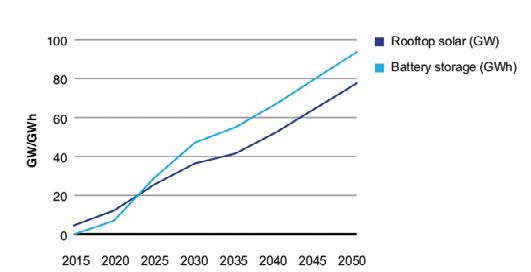
As the centralised generation and distribution model implies, the grid was designed and built for power to flow in one direction. The proliferation of uncontrolled PV generation, however, will mean that power will flow across the grid in both directions. This places the grid under even greater pressure, as ‘reverse power flows’ create voltage imbalances and stability issues. Figure 3 illustrates the impact of this, showing the projected decade in which reverse power flows from uncontrolled generation cause significant grid stability problems. From this we can see that much of the grid will feel the impact in or before 2025, with regional areas being some of the earliest hit.

It is safe to say that the electricity sector will continue to face a turbulent future. Consumers are unhappy and distrustful, technological innovation is driving change at an unprecedented rate, and the framework that governs it all is complex, with many interdependencies. In June 2017, a Dr Alan Finkel-chaired expert panel convened by COAG conducted a review into the future security of the NEM entitled the Blueprint for the Future Security of the National Electricity Market8. This document laid out the desired outcomes for the electricity system of security, increased reliability, increased customer reward and decreased emissions. To meet these objectives, the structure of the regulatory environment should be shaped by a set of core principles:
» Where possible, find ways to deliver positive outcomes for consumers and market participants under existing regulatory frameworks
» Simplify consumer energy offers
» Incentivise larger scale adoption of smart gateways and VPPs
» Be holistic and seek to undertake ‘least regret’ actions to future proof rather than isolate to solving singular issues
» Incentivise investment in the skills and knowledge of the battery installation workforce across Australia
Consumer sentiment is clear: they are no longer willing to shoulder the burden of rising electricity costs and are seeking to regain power in their relationship with energy. Discontent combined with technological innovation are driving a seismic structural shift in the electricity industry.
Critically however, not all storage and generation assets are created equal, and currently the majority of batteries installed in Australia do not have a smart gateway attached, making them incapable of participating in a VPP. The result is an increase in uncontrolled generation on the grid, ultimately driving up electricity costs for all consumers. If policy around incentivising uptake of smart gateways for battery and PV owners in Australia is not set correctly, we are at risk of watching Australia’s global market advantage slip through our fingers.
Any reform agenda for electricity needs to start with refocusing regulation. The way the market is governed should be grounded within a set of core principles that seek to drive mutually beneficial outcomes for all those in the electricity value stack. This will help reengage consumers, rebuild trust in industry and ultimately embrace the consumer revolution rather than resist it. The time is now for industry to respond in a proactive way to support the needs of the consumer both now and into the future.
This is an excerpt from a chapter originally published in the Australian Strategic Policy Institute Special Report Designing for Resilient Energy Systems
6 Business Insider, “The most and least trusted industries in Australia”, 2018
7 https://www.energy.gov.au/publications/independent-review-future-security-national-electricity-market-blueprint-future
8 https://www.energy.gov.au/government-priorities/energy-markets/independent-review-future-security-national-electricity-market
DISRUPTION www.energymagazine.com.au November 2019 ISSUE 8 69
Figure 3. Projected decade in which penetration of Rooftop Solar results in reverse power flows (Energy Networks Australia, 2017).
Figure 2: Projected Rooftop Solar and Battery Storage installed capacity nationally (Energy Networks Australia, 2017).
THE CONNECTED WORKER

Over the last few years there has been a lot of focus on internet of things (IoT), machine learning and artificial intelligence in the oil and gas industry, particularly in terms of how they’re changing the very way the entire industry operates. With widespread adoption of these disruptive technologies across the industry, an important question needs to be answered – will automation completely replace people or create new employment opportunities?
Energy Conference Network’s IoT in Oil & Gas event, held on 16-17 September in Houston, Texas, staged the ideal platform for organisations like Chevron, Shell, ConocoPhillips, ExxonMobil, BP and many more global players to talk about how they’re leveraging smart technologies to respond to and navigate volatile oil prices and constantly rising bottom-line pressures.
This event (the world’s largest focused IoT in oil and gas event) attracted 800 attendees, 80 speakers and 60 sponsors, and was opened with a keynote presentation by Brent A. Kedzierski, Manager, Manufacturing Learning Global Portfolios & Innovation from Shell Downstream US. Mr Kedzierski shared his insights on how IoT is going beyond digital transformation to creating the connected environment, and thereby, the connected worker.
Will humans be the future of work? Mr Kedzierski suggested that technology is disrupting the way we work and replacing traditional jobs – but what has been unclear is how humans fit into the new digitally-focused, automated oil and gas industry of the future.
“Well the answer to this question is simple,” said Mr Kedzierski. “The workforce is changing, not disappearing. Those born between 2011 and 2025 (known as the Alphas) are
entrepreneurial, born into technology and social networking. We will need jobs that present higher levels of cognition.
“Our workforce will become more human, not less so. Yes, key technologies like drones and sensors are replacing human activities, but this creates new entrant opportunities to the workforce.
“As it is, we don’t spend enough time talking, listening and using emotional intelligence, so the human spirit will be much more valuable in the future.
“We will see an increase in judgement and critical thinking, problem solving, written and verbal communications.
“IoT is creating the connected worker and they need continuous learning and skills development – it's the job currency of the future.”
Energy Conference Network’s globally acclaimed IoT in Oil & Gas series is coming to Australian soil on 3-4 December in Perth.
The IoT & Machine Learning in Oil & Gas Australia event will bring together 25+ speakers and senior executives representing the entire Australian oil and gas industry, to learn how to harness the power of intelligent technologies to respond to and navigate volatile oil prices, constantly rising bottom-line pressures and seamlessly digitalise their operational capability.
Hear more presentations like Mr Kedzierski by registering for the conference at www.iotinoilandgas-australia.com, or for further information, contact Symon Rubens on symon.rubens@energyconferencenetwork.com
November 2019 ISSUE 8 www.energymagazine.com.au
70 IoT & CLOUD COMMUNICATION
Brisbane Convention & Exhibition Centre
Sponsorship and exhibition opportunities available and selling fast
Go to www.en2020.com.au to find out how you can get involved.
Registration opens
October 2019
www.EN2020.com.au
RESEARCH PARTNER PRINCIPAL SPONSOR
MAINTAINING THE SPARK:
WHY UPGRADING ELECTRICITY INFRASTRUCTURE MATTERS

The growing investment in renewable energy projects and increased demand for safe and secure electrical distribution systems are expected to result in the switchgear worldwide market growing to $150 billion by 20291
Queensland is currently undergoing a massive upgrade of its electrical infrastructure with the State Government investing $2.2 billion to ensure the network. As Queensland Energy Minister, Dr Anthony Lynham, said, “A safe, reliable, affordable energy supply underpins economic growth, jobs and business opportunities”.
SunCoast – the multi-million dollar project
As the Sunshine Coast grows and expands in population, so does the demand for secure and reliable energy. State owned energy company, Energex, is currently implementing its $106.7 million development of a new dual-circuit 132kV power line on the Sunshine Coast between Palmwoods and West Maroochydore –the SunCoast project.
The SunCoast project was originally approved in 2011, and then relaunched in 2017 when then State Energy Minister, Mark Bailey, announced that the work would form an important foundation for the area’s expansion.
The project has been altered to fit the immediate needs of the community and Engex decided not to proceed with the Pacific Paradise leg of the upgrade.
Currently, civil construction is well underway on various sections of the 17km electricity easement.
Energex has completed an assessment of environmental impacts and will deliver environmental offsets in accordance
with commitments made to the community within the Project Environmental Impact Statement at the time of Project Designation.
Almost 70 per cent of necessary vegetation removal has been completed with revegetation taking place along watercourse embankments where required to ensure creek bank stability.
Energy Queensland’s Head of Corporate Strategy and Executive General Manager for Asset Safety and Performance, Peter Price, said that the project was being built to keep up with the significant investment, development and rapid growth planned for the Sunshine Coast.
“Energex’s SunCoast project is crucial for the future safety and reliability of electricity supply in this whole region.”
Mackay power boost
Established in 1967, the Tennyson Street Zone Substation is a 50-year old substation supplying electricity to the Mackay CBD and eastern suburbs. Ergon Energy will upgrade the current assets which are facing operational capacity constraints due to the economic growth of the area and aging equipment.
The $28 million Tennyson Street Substation Upgrade Project will replace the existing zone substation equipment with two new transformers, operating switchgear, and new powerline cables exiting the substation.
The project aims to replace the aging assets which have been difficult to substitute in previous planned works. The switch to the new substation needs to be executed quickly, safely, and result in minimal disruption to customers.
The new modular indoor HV switch rooms will be installed on Ergon Energy land adjacent to the substation.
Local contractor NF Corbett was awarded the contract for the
72 SWITCHGEAR
Continuously upgrading electricity infrastructure is vital to maintaining an effective and secure power supply. Switchgear is a significant aspect of this infrastructure, helping to streamline equipment from overload and preventing damage to electrical circuits. Here, we take a look at a few sites around the country where electrical infrastructure and switchgear is currently being upgraded.

project’s civil construction works. NF Corbett previously worked on the Cairns North Substation and Calliope River Substation.
Ergon expects that the investment will benefit around 4660 premises in central and eastern Mackay and support future economic growth, as well as providing the city with new options for restoring power during unplanned outages.
When planning a major project, Ergon Energy Area Manager, Dan Werthenbach, said that it is important to prioritise the community’s needs.
“We have made the community’s needs a priority to ensure the least possible disruption to businesses and residents during the construction phase.”
The project is expected to be completed in October 2020.
Re-energising Townsville
In February 2019, Townsville suffered a devastating flood which led to over 17,000 homes cut off from electricity.
The floodwaters not only severely damaged major components of the city’s power network, they filled vital electrical equipment in affected suburbs with mud and silt, all of which needed to be spotlessly cleaned before they could be safely re-energised.
Ergon Energy, supported by Energex, immediately set to work cleaning up the disaster aftermath and restoring Townsville’s energy.
The major restoration project involved the assessment, cleaning and repairing of the inundated substations, nearly 1700 pillar boxes and around 180 padmount transformers and high voltage switchgear. Crews were also required to replace two damaged padmount transformers, two switching stations and four poles.
Ergon’s Executive General Manager for Distribution, Paul Jordon,
praised the resilience, understanding and support from the Townsville community.
“For our crews, the restoration effort was dirty, muddy and, in many cases extremely challenging.
“I personally want to say a big thanks to every one of our local staff and those who have travelled from every corner of the state to get the job done.
“I also sincerely thank the community for welcoming our staff and remaining patient while they worked around the clock to reconnect their properties.”
Powerlink completed a $9 million project replacing two 40-yearold transformers at Garbutt station in Townsville in September. The project, which began in 2018, was necessary to secure the power supply for the region and help to manage demand in the circumstance of natural disasters such as the February floods.
The future of the electrical infrastructure
To help guarantee the functionality of the upgraded assets, staff need to be adequately trained. Energex and Ergon partnered to launch a training centre which provides technical training, ensuring the reliability of their distribution networks.
Esitrain enables external companies to sign up to 70 training courses across seven locations, which will qualify workers to work on the State’s 212,000km long network. The courses offer training in areas such as high voltage live line and overhead, underground cable joining and high voltage switching.
As the current electrical infrastructure continues to age and the demand for power grows, Australia will need to invest in upgrading its switchgear to secure its supply and keep the lights on.
1 https://www.visiongain.com/the-worldwide-switchgear-market-is-expected-to-achieve-152-5bn-by-2029-says-visiongain-report/
73 SWITCHGEAR

GET READY FOR EN2020 IN BRISBANE
Energy Networks 2020 Conference + Exhibition (EN2020) will take place in Brisbane from 2-4 June 2020 – now is your chance to register early and secure a prime spot at the only energy network conference run by the industry, for the industry.
This preeminent event for the energy network sector is run every two years, bringing together the best in our industry to share expertise on how we navigate the energy system’s transformation.
Run by Energy Networks Australia, the event will be attended by energy network CEOs and more than 1000 people from the energy industry.
In a busy world often dominated by social media, the importance of connecting in a live face-to-face setting has never been more pronounced.
There is no other conference and exhibition in Australia with the exposure and focus on electricity and gas networks. This is the industry’s chance to collectively consider the big challenges ahead.

The call for abstracts, inviting potential speakers to outline their topics of interest, identified five key themes:
» Customer driven change
» Future market design
» The evolving role of networks
» Our data-driven future
» The future is coming
The more than 230 abstracts submitted for consideration as part of the program have been blind-reviewed by the Program Development Committee. This comprises experts from within Energy Networks Australia’s member companies, spanning electricity transmission and distribution and gas distribution businesses. The program will be released in December.
Exhibition opportunities
Exhibiting at this world-class conference and exhibition will put your products and services in front of the network sector. Speak directly to decisionmakers, demonstrate your products and promote your value in an environment purposebuilt for business discussion.
The event is an opportunity to connect with people from across the network sector and its suppliers, to strengthen existing relationships and create new ones.
Visit the conference website to view the sponsorship and exhibition opportunities available and align your brand with this prestigious event. Don’t miss your chance to be part of this exchange of ideas.
For more information, visit en2020.com.au
November 2019 ISSUE 8 www.energymagazine.com.au 74 EVENTS ENERGY PARTNER CONTENT

YOU’VE JUST FOUND THEM. LOOKING FOR THE NUMBER ONE MARKETING AGENCY IN THE ENERGY INDUSTRY? Would you like to work with us? Get in touch and we’ll arrange a time to chat. Ph: (03) 9988 4950 Email: info@monkeymedia.com.au www.monkeymedia.com.au CONTENT MARKETING SEO DIGITAL DESIGN SOCIAL MEDIA GOOGLE ADWORDS WE ARE MONKEY MEDIA. Our team uses their industry-specific knowledge to help you reach your target audience. We can help you navigate:
76 November 2019 ISSUE 8 www.energymagazine.com.au FEATURES SCHEDULE FEATURES SCHEDULE Aerodyne Australia 33 ADGO Conference ............................................................................................................................................................... 41 ANT Energy Solutions .......................................................................................................................................................... 15 AOG Conference ................................................................................................................................................................IBC Brighter.............................................................................................................................................................................. 45 Energy Networks Australia ................................................................................................................................................... 71 Kubota ................................................................................................................................................................................. 11 Monkey Media 75 Nearmap ............................................................................................................................................................................. 27 Ningbo Ginlong Technologies IFC Omicron Electronics ............................................................................................................................................................. 53 Position Partners 37 Power Equipment ................................................................................................................................................................. 7 Veolia 9 Vermeer .......................................................................................................................................................................... OBC ADVERTISERS’ INDEX MAJOR FEATURES Grid integration and stabilisation Disruption Embedded networks Biofuels SPECIAL FOCUS Electric vehicles IoT & cloud communication Demand management EQUIPMENT & MACHINERY Switchgear EVENT DISTRIBUTION Disaster Management 2020 MAJOR FEATURES Solar Pumped hydro Hydrogen and future fuels SPECIAL FOCUS Smart networks (big data, smart meters and smart grids) Consumer and industrial retail Security EQUIPMENT & MACHINERY Spatial & GIS EVENT DISTRIBUTION Digital Utilities 2020 MAJOR FEATURES Energy networks Storage and solar Safety and risk management Waste-to-energy SPECIAL FOCUS Automation Asset management Industrial energy EQUIPMENT & MACHINERY Transformers and substations Vegetation management EVENT DISTRIBUTION Energy Networks 2020 Smart Cities 2020 Asset Management for Critical Infrastructure June 2020 Deadline: 24 April 2020 November 2020 Deadline: 16 October 2020 MAJOR FEATURES Wind Nuclear energy Gas pipelines Energy efficiency SPECIAL FOCUS Microgrids Disaster management Distributed generation EQUIPMENT & MACHINERY Asset inspection & drones/UAVs EVENT DISTRIBUTION All-Energy September 2020 Deadline: 24 July 2020 March 2020 Deadline: 7 February 2020
MEET THE RIGHT DECISION MAKERS AT AUSTRALIA’S LARGEST OIL & GAS EVENT
As the leading industry event, AOG brings together government, major operators and the entire supply chain. Attendees from around the globe gather together for a dedicated 3-day showcase to discuss the latest innovations, products and opportunities.
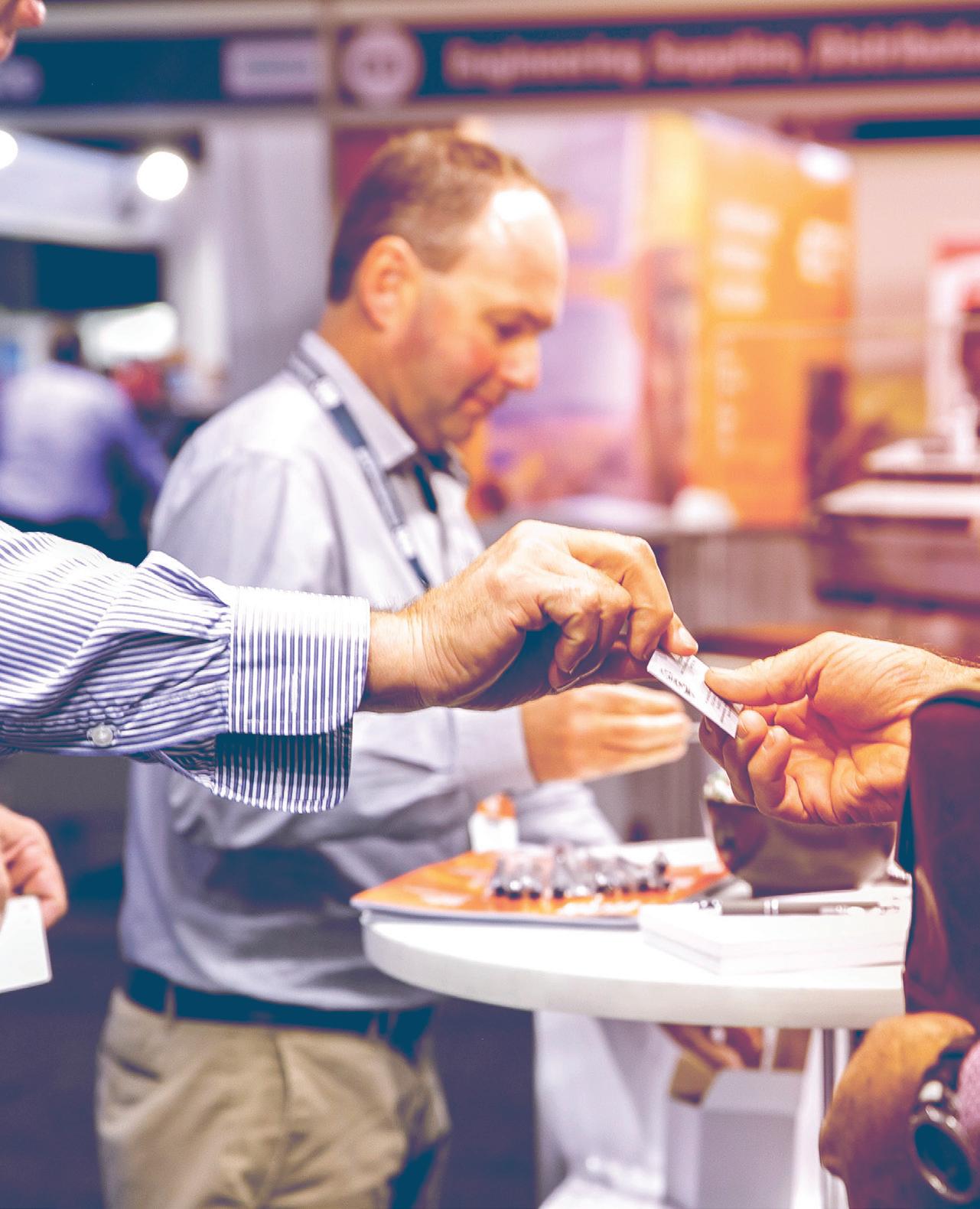
68% of visitors to AOG state their reason for attending is to discover new products, services or suppliers to enhance their business. Place your business in front of the decision makers that can make a real impact on your growth.
INTERESTED IN EXHIBITING?
BOOK A STAND TODAY!


Australasian Oil & Gas Exhibition & Conference FOR WA RD TOGETHER 11-13 MARCH 2020 PERTH CONVENTION & EXHIBITION CENTRE PLATINUM SPONSOR PRINCIPLE SPONSORS
AOGEXPO.COM.AU 8700+ Attendees 6 Dedicated Zones 300+ Suppliers
INCLUDING A NEW RENEWABLES & ENERGY STORAGE ZONE
SPEED. PRECISION. LOCAL PRODUCT SUPPORT. THE VERMEER PD10 SOLAR PILE DRIVER IS YOUR SPRINGBOARD INTO LARGE SCALE SOLAR
Designed from the ground up for solar array installation, the PD10 significantly reduces cycle times. Laser guidance, native Carlson® GPS integration, and an innovative hammer design means outstanding accuracy, reduced survey costs, less pile damage—and less rework. Get your project underway with the peace of mind that only the backing of a truly nationwide dealer support network can offer. Contact us to learn more.









/ VermeerAustralia
VERMEER.COM.AU | 1300
Vermeer and the Vermeer logo are trademarks of Vermeer Manufacturing Company in the United States and /or other countries. © 2019 Vermeer Equipment Holdings Pty Ltd. All Rights Reserved.
PROVEN PD10 PILE DRIVER PROJECT
VERMEER























































































































































 by Nathan Knight, General Manager ANZ, Data Center Group, Lenovo
by Nathan Knight, General Manager ANZ, Data Center Group, Lenovo




 by Alan Reid, Head of Business Relations, Reposit Power
by Alan Reid, Head of Business Relations, Reposit Power












